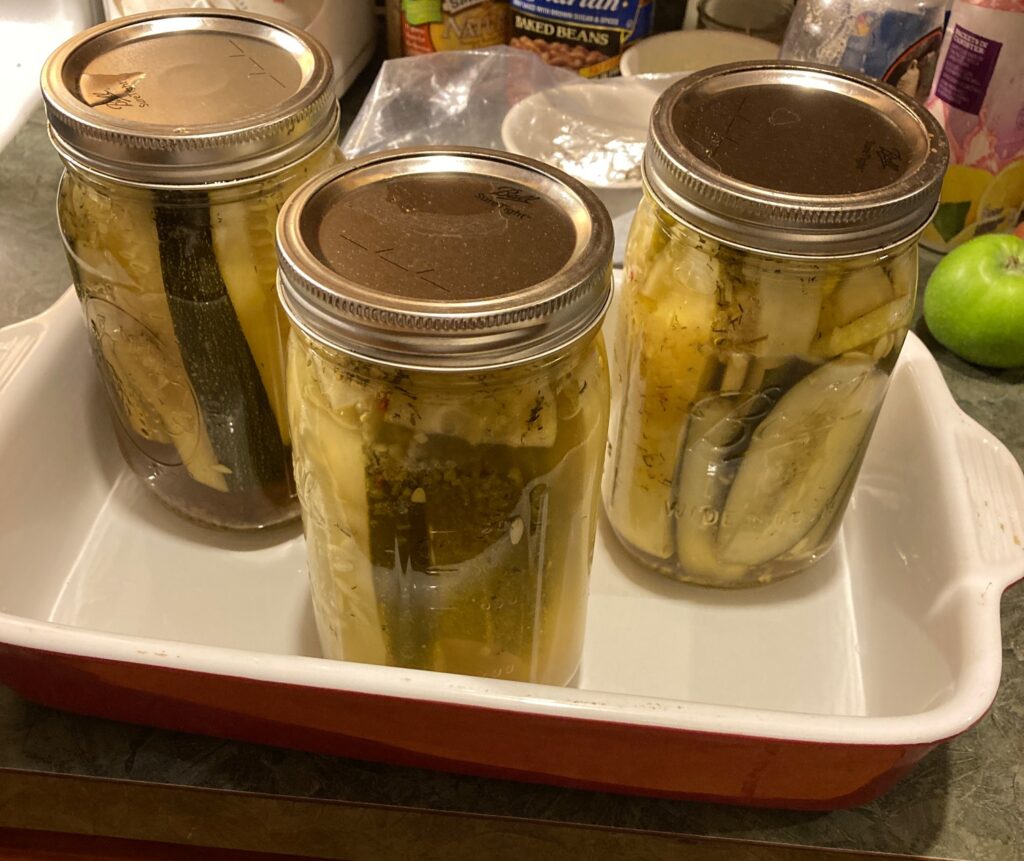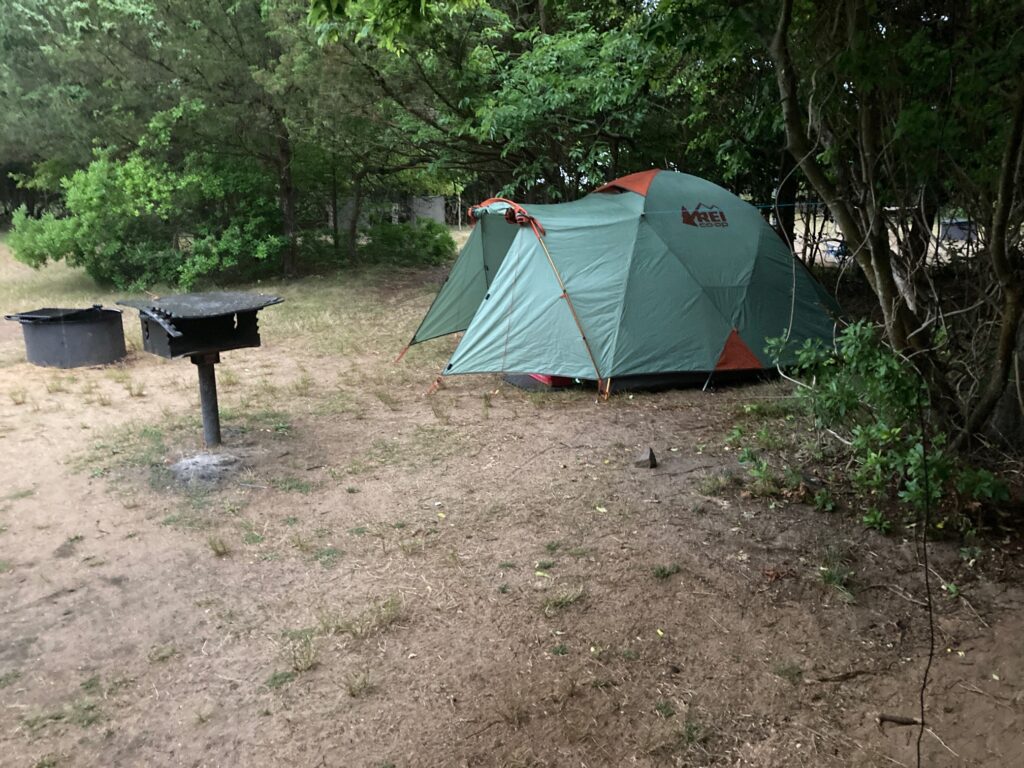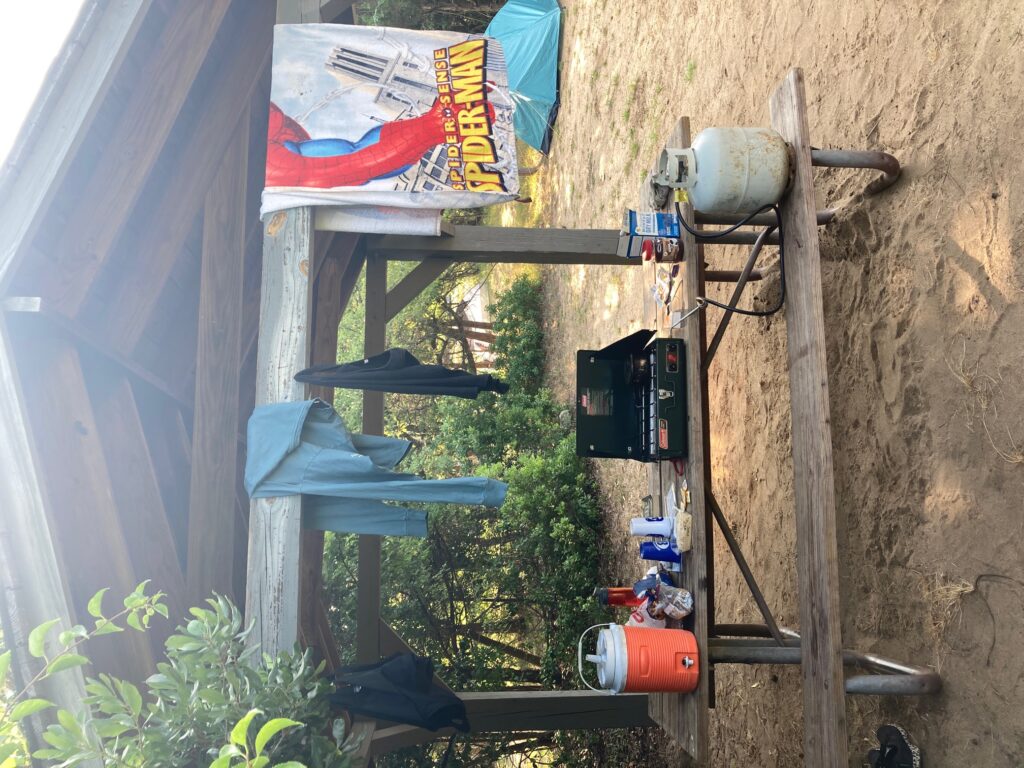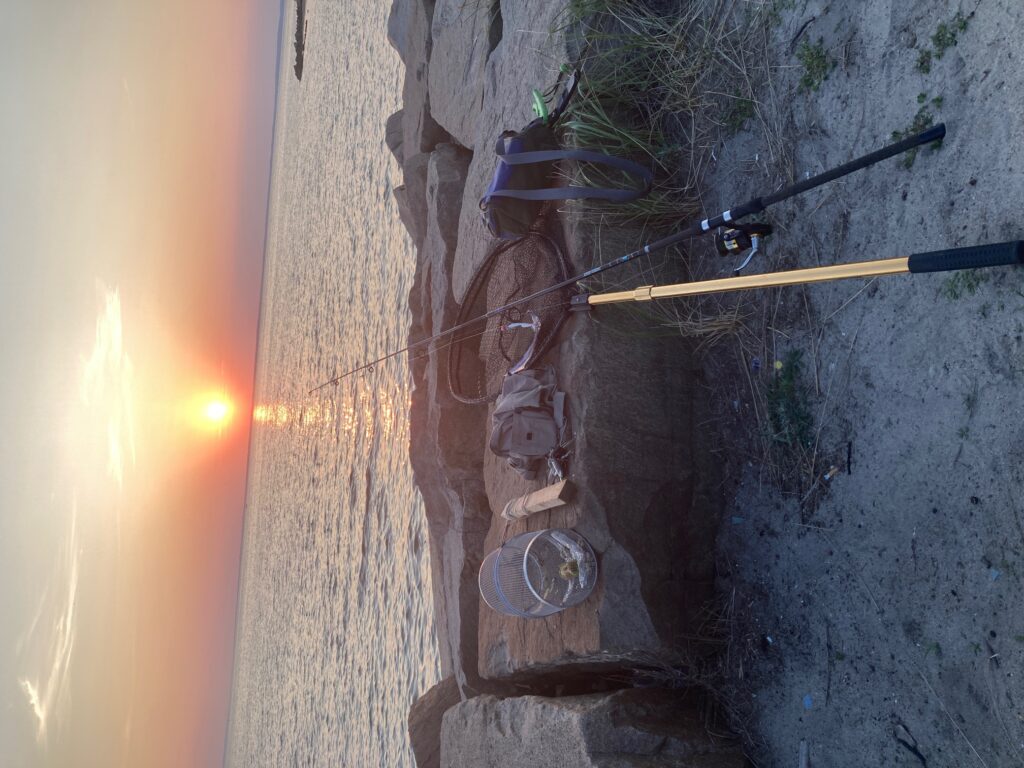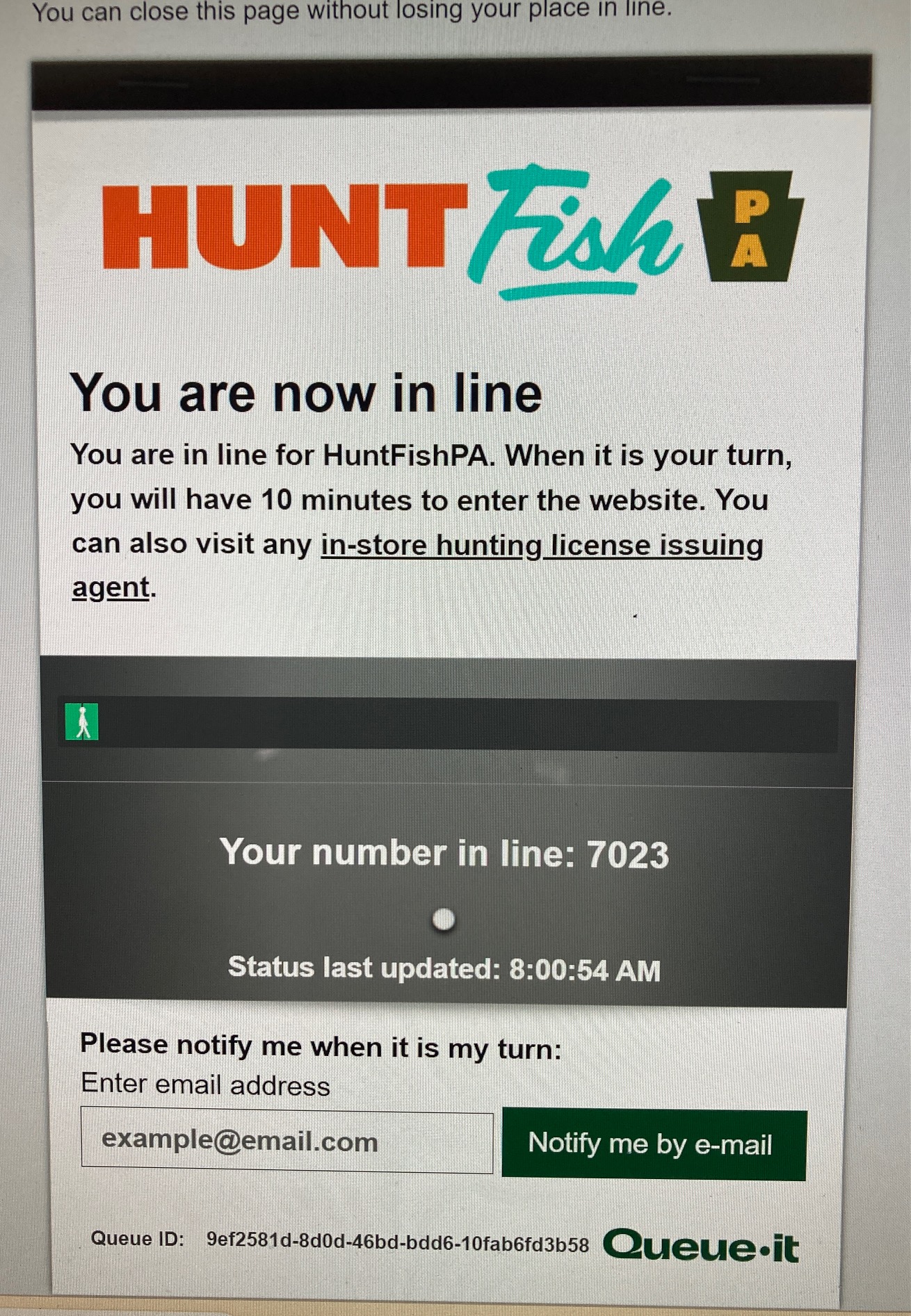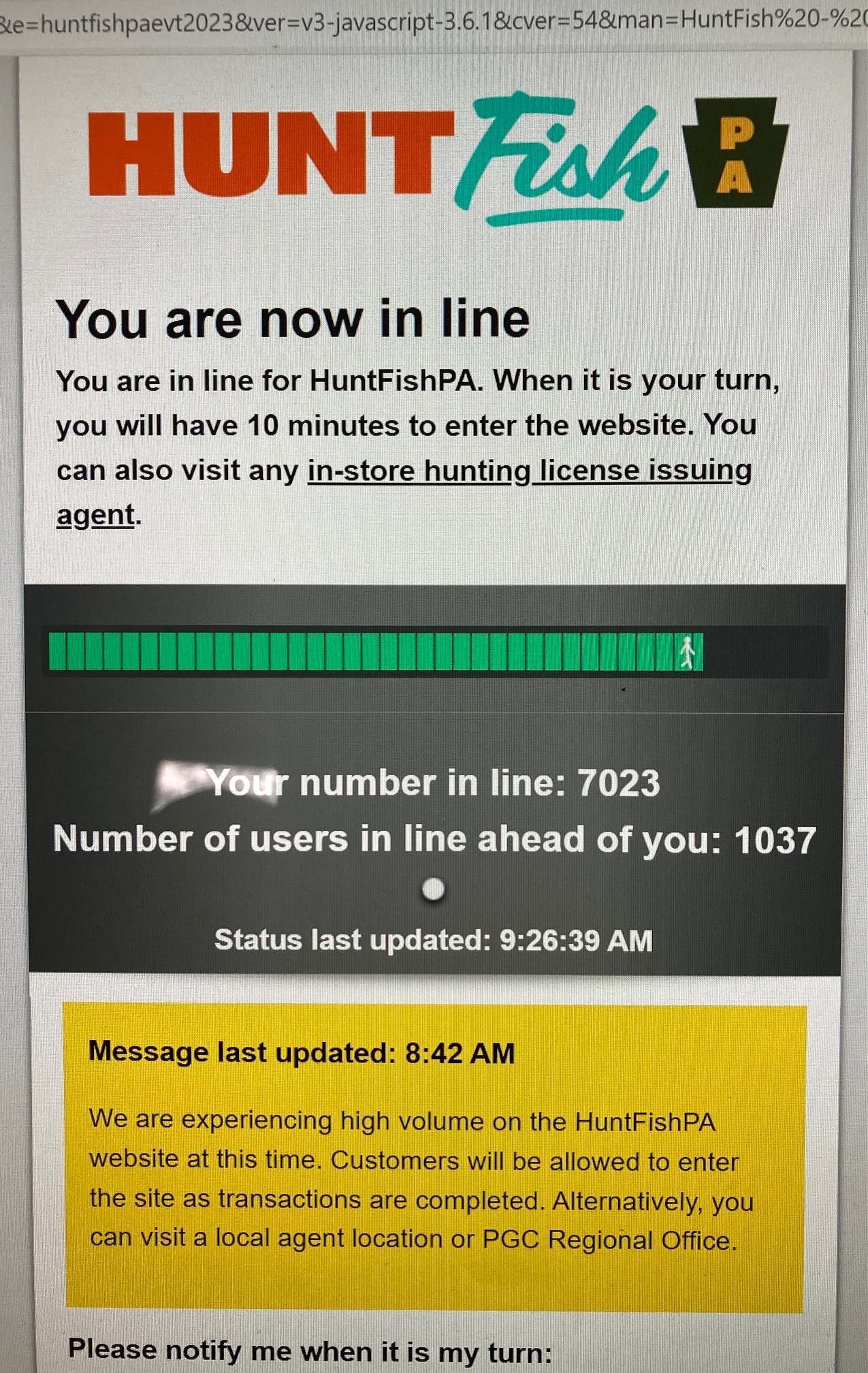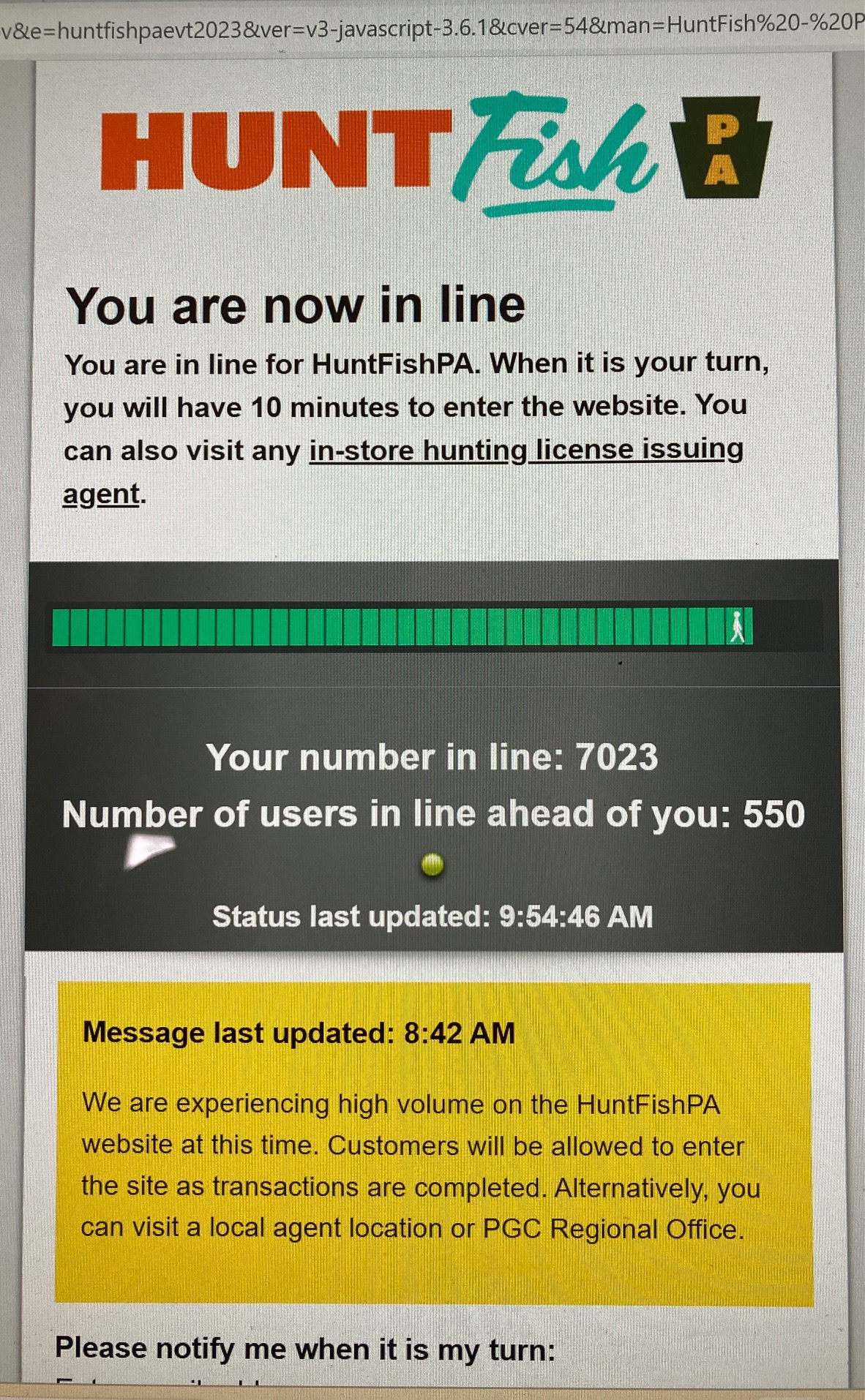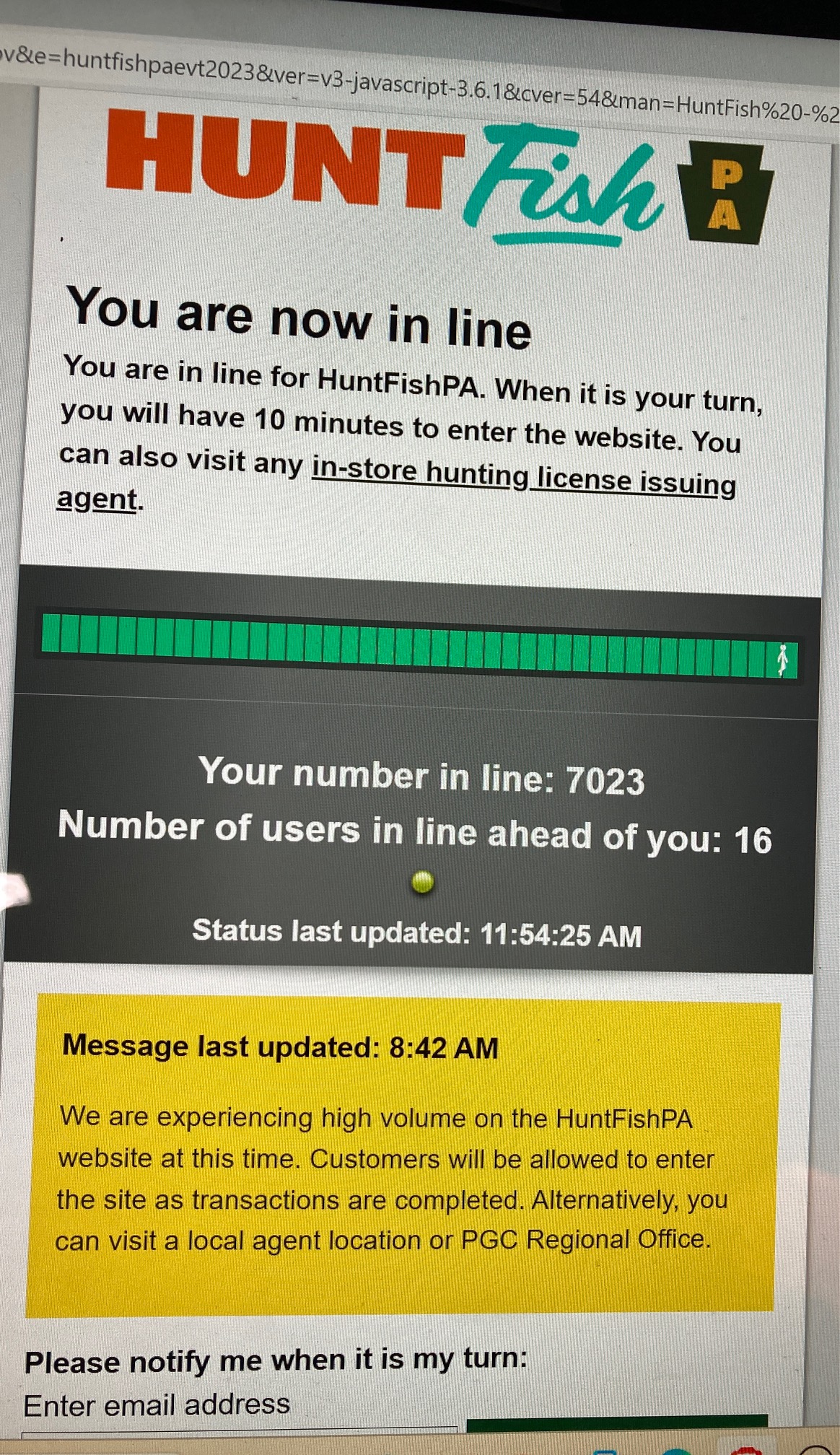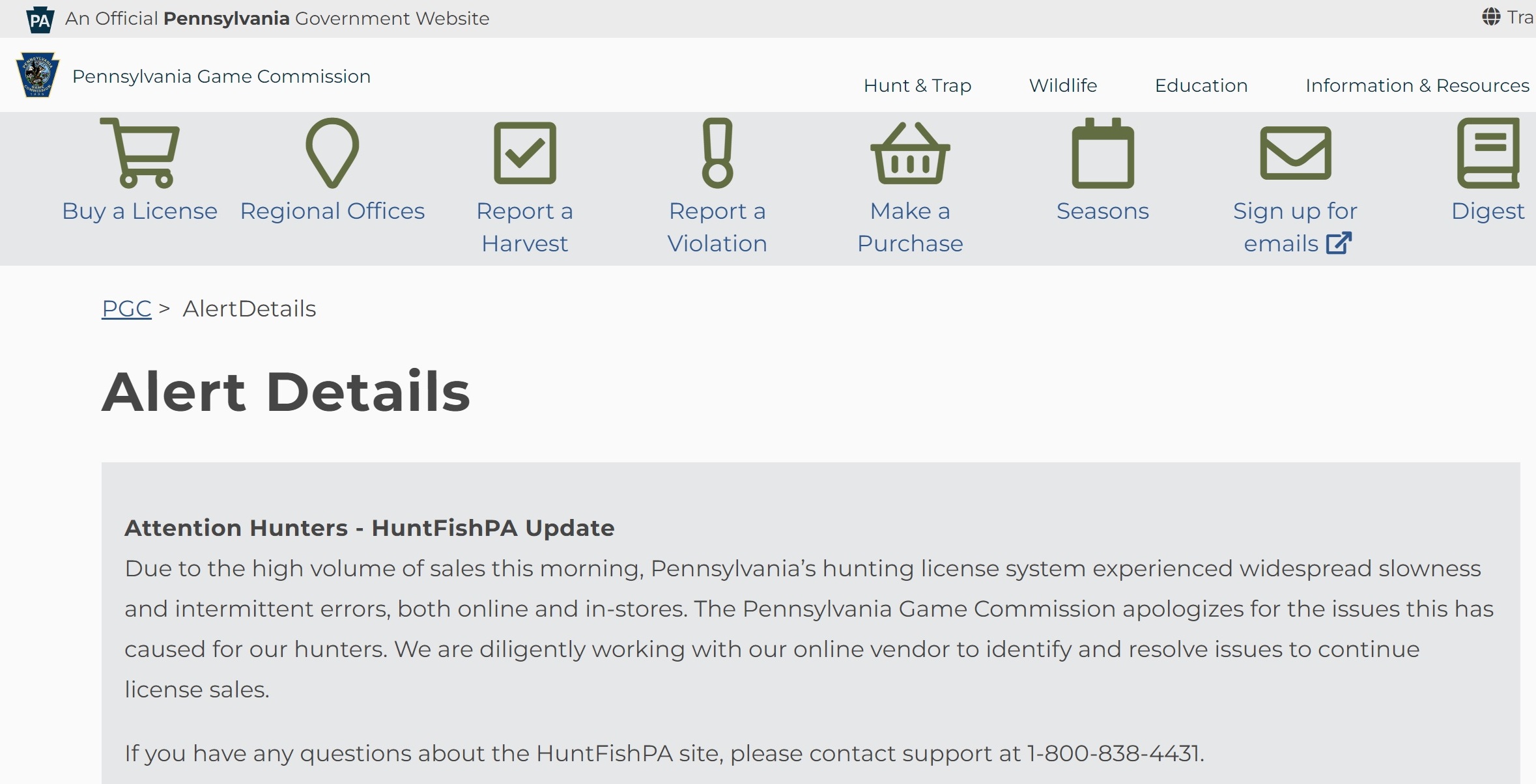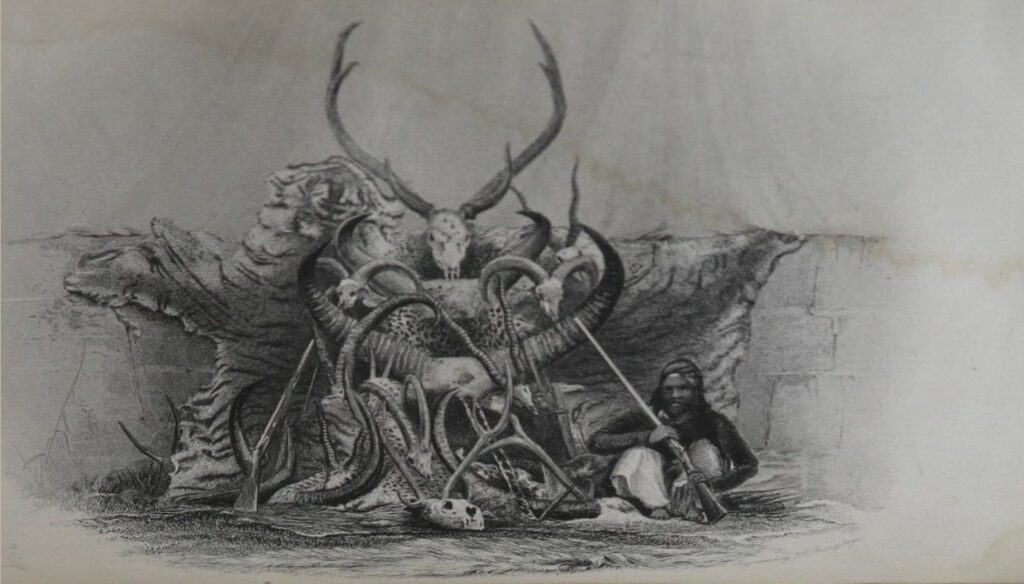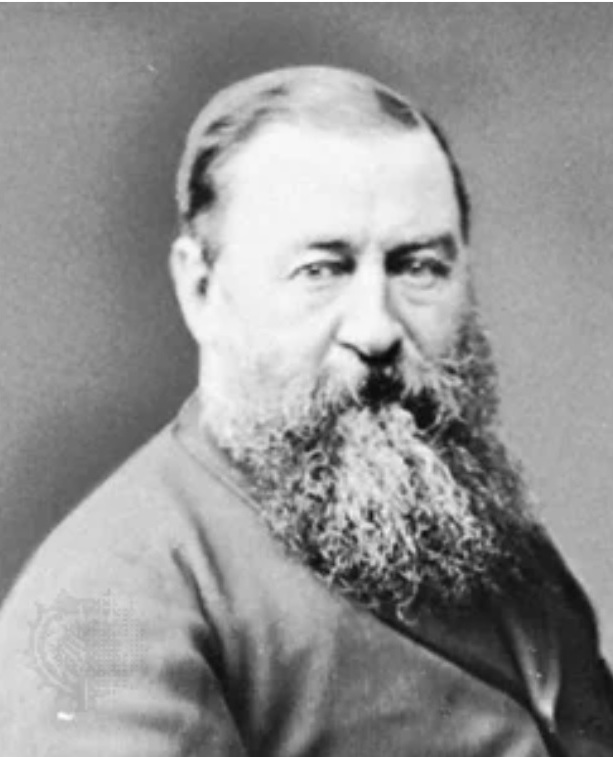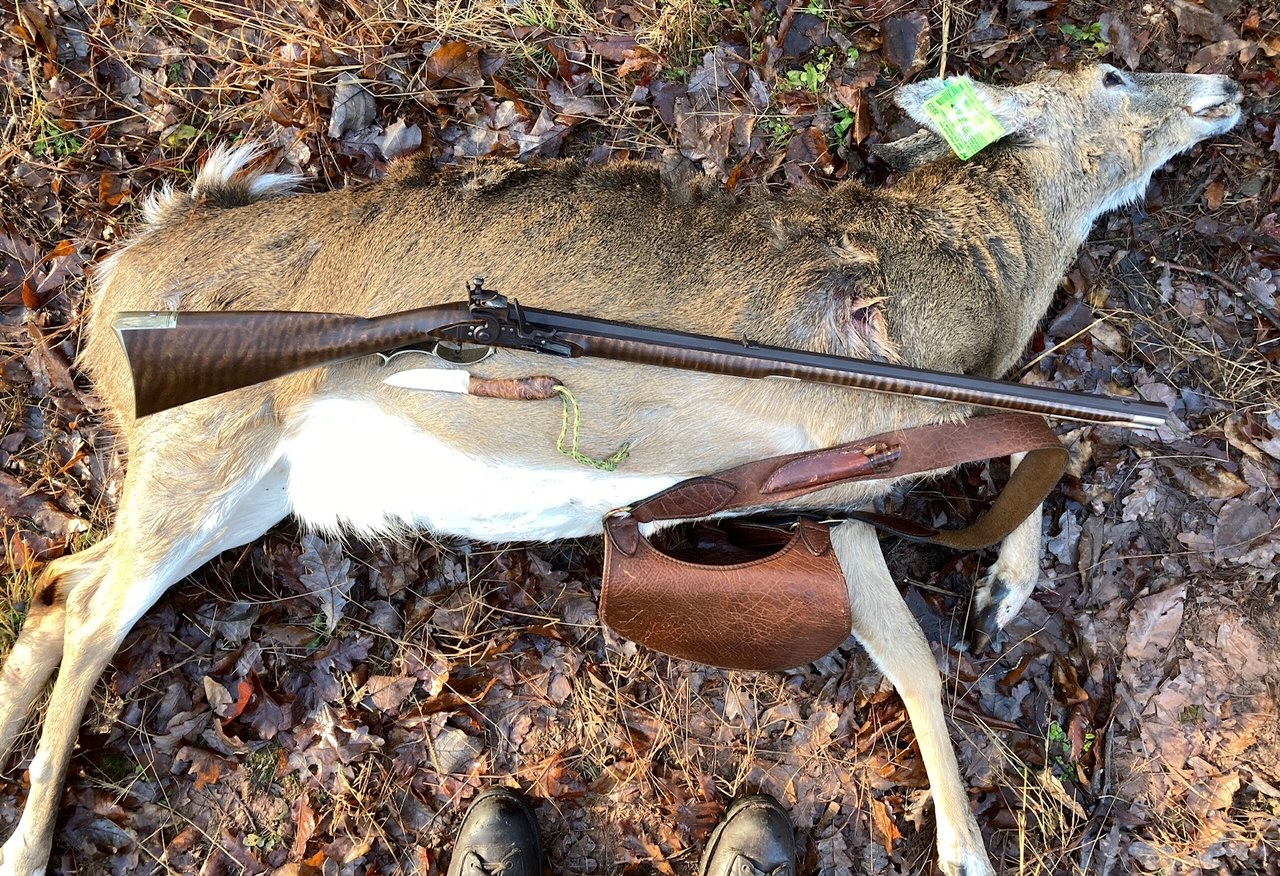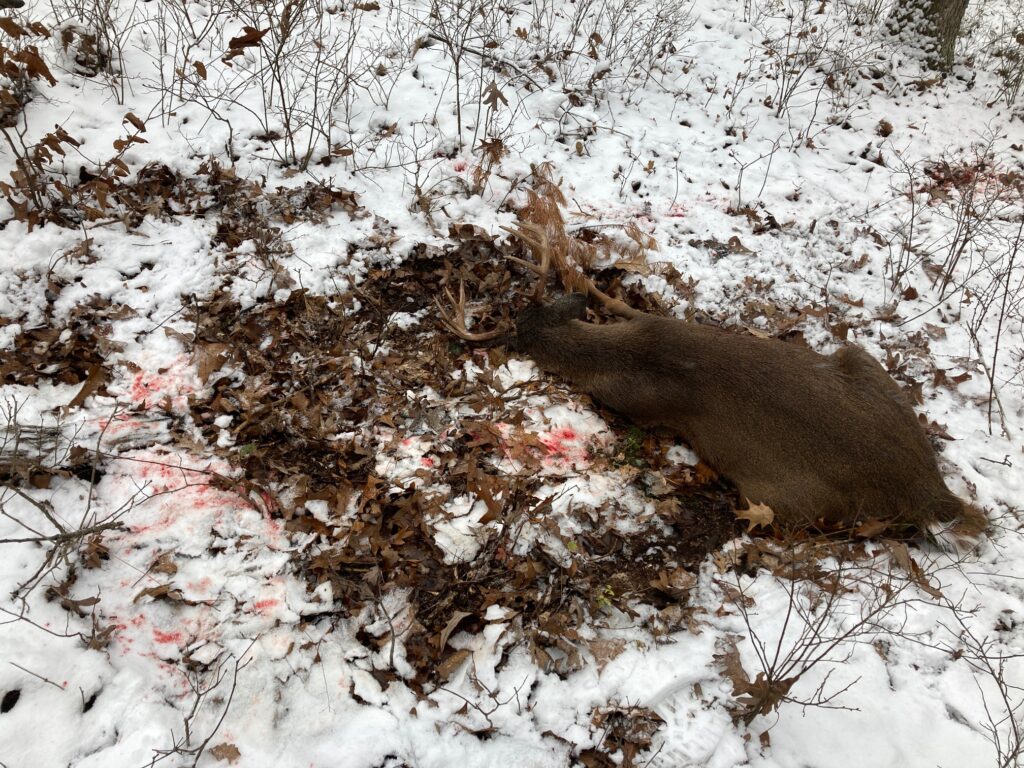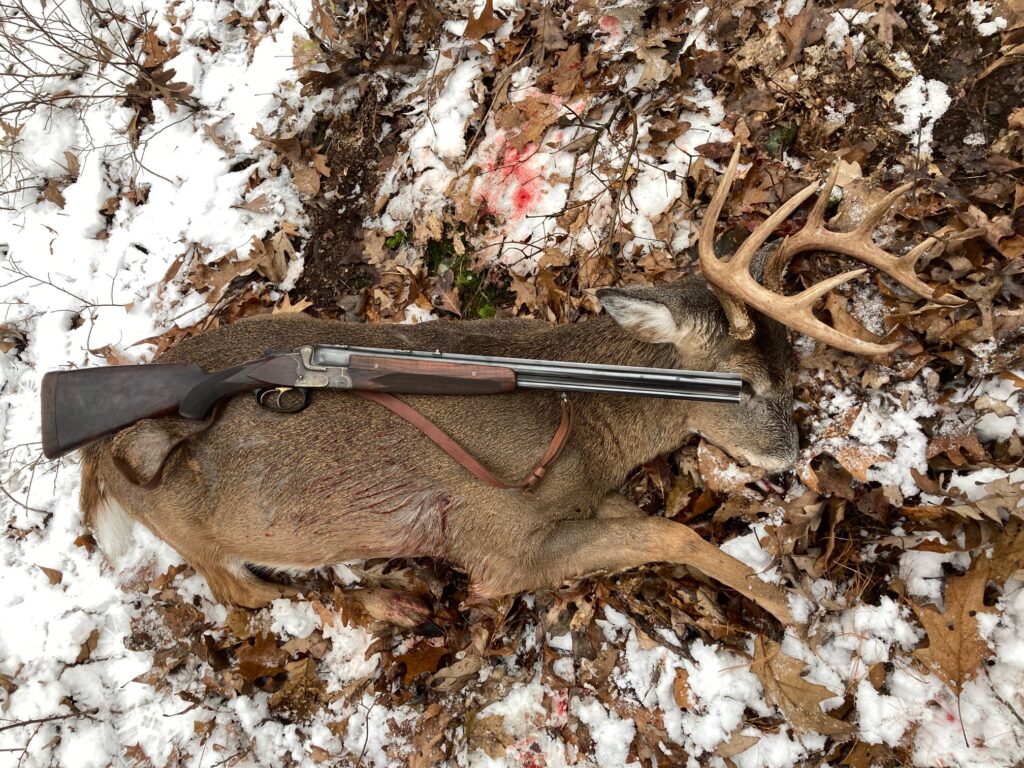Posts Tagged → deer
Why we share wild food with each other
People around the planet enjoy sharing wild food with one another, and we always have since God above evolved our species, however it is He evolved it. It is an innately human trait to both enjoy giving and receiving wild food.
Wild food is a broad category, but it excludes anything we buy, especially in a big store. Foods from stores are almost always, or are always, plants and animals raised in intensive industrial environments, replete with chemicals everywhere and in everything. Wild food usually includes fruits, herbs, and vegetables grown in our own gardens; fruits we have picked in the wild, like berries and apples; and any wild game meat or fish we have harvested. Chemicals are either non-existent or are naturally occurring in minute amounts from the native soil.
All around the planet people put a high premium on wild harvested meat. In Africa and Australia, “bush meat” is highly valued as fresh, nutritious, free of human-injected chemicals and hormones. Everywhere bush meat is eaten, it is traded in lieu of money. And when a European bites down on a size 8 piece of shot in her forkful of grouse recently from the Scottish Highlands, where it was shot on a drive, hung for three days in a cooler, and then shipped off to Spain, Germany, England, or France, she knows she is eating something special, and it tastes even better. The same is said for the meat of hunted red deer, and occasionally wild boar, both of which are highly prized foods served in restaurants and home kitchens across Europe.
Wild food is better for us, we all know that, both in terms of what is in it and also what is not in it, because (except for poached bush meat from at-risk wild animal populations in Africa) it is environmentally sustainable. It also tastes better, because it has grown up under natural circumstances. Giving and receiving it as a gift is a symbol of real friendship and caring. Wild food is something most Americans can participate in, especially as growers and givers, and so I hope that someone reading this is inspired to take a corner of their luxury status symbol yard and turn it into an unruly food garden. The pleasure of sharing the harvest with friends and neighbors is quite enjoyable.
Humans began as hunters and gatherers and we remain such, even with our thin veneer of civilization inartfully separating us from the wild world around us. Much of our innate gender differences are centered on what hunting and gathering was done by our ancestors over the past few hundred thousand years. Gathering food by hand is a natural and innately human thing to do, and most people find gardening calming and enjoyable. I guess being a real human and not a false, contrived human can be pleasurable.
Last month I picked over six pounds of blueberries and another five pounds of blackberries and red and black raspberries, about a hundred pounds of peaches, and about fifty pounds of apples. I won’t share these hard-won prizes with you by the fistful, because then the berries would all disappear within a few minutes. Rather, I will share them by mixing them into muffins, pancakes, cobblers, pies, and preserves spread onto toast, ice cream, and cakes. This way these gems last all year long, and everyone gets to share in them.
Aside from being cleaner and tastier than industrial foodstuffs wrapped in plastic and styrofoam, wild food has the benefits of bringing us closer to nature, closer to reality, closer to self-reliance and self-sustainability, and closer to people we might not normally encounter. Nature can be the sharp berry bushes we must reach through to pluck our juicy berries, and it can also be the mother bear and her cubs waiting for you and me to clear out of the scratchy berry patch so they, too, can feed on Nature’s bounty.
Nature here can also include a variety of destructive garden pests like squirrels, rabbits, groundhogs, and chipmunks, and learning to cope honestly with these artificially overabundant animals teaches us important lessons about reality versus luxurious and silly childish feelings and notions of animal welfare that are terribly destructive.
For example, artificially high populations of pest species, like squirrels and ground hogs, spread high amounts of disease and physical destruction. And when vegans strut and brag about their reliance on industrial monocultures like soy beans, they ignore the tremendous environmental and habitat destruction wrought in their vegan names. There are significant environmental costs to veganism and vegetarianism that could be offset if those adherents participated in wild food, like growing their own and trading/ bartering for what they cannot grow themselves. Few things are more annoying than listening to someone from a wealthy lifestyle bragging up their veganism/ vegetarianism while simultaneously tearing open plastic wraps and environmentally damaging containers containing industrial foods. Food isn’t just about what you put in your mouth, it is very much about where it comes from, where it was grown and where it lived before your credit card brought it home.
Hunting in America and Canada produces millions of pounds of fresh, clean, natural, wholesome wild meat for more than just the people who pull the trigger. Hunters Sharing the Harvest is a well known program that enjoys widespread support from both givers and receivers. Schools, neighborhood soup kitchens and homeless shelters, and just simple low-income people, all benefit from receiving this wild meat. And farmers and forest owners benefit from having artificially overabundant deer and hog populations thinned out so their crops can grow in peace.
For those silly people who oppose hunting, jiminy crickets, people, wake the heck up. You are not living in a fairy tale book, and you are having your own huge impacts on the planet around you. An animal’s life is not just measured by how it died, but also how it lived. Almost all industrial meat comes from factory farms, enough said. However, wild meat comes from animals living their lives to their fullest before quickly falling over dead from a bullet or an arrow. Any modern educated human who believes that wild animals die naturally under antiseptic and peaceful conditions is a fool, enough said. Recreational and population management hunting (not poaching or market hunting) is a perfect way to provide environmental protection to wildlife habitat, conserve vulnerable wildlife populations, and harvest natural, sustainable wild food.
By mid-December of this year, I will have probably shared over a hundred pounds of wild meat, mostly venison, occasionally waterfowl, turkey, and small game. The people who receive my gifts of deer meat (that I have shot) are always grateful, and they often report back to me on what they made with the gift, who they shared it with, and how delicious it tasted. This exchange is true friendship, and in a politically fractured world, we all can use a little more friendliness, a few more friends. Wild food is my way of contributing.
In an hour I am dropping off a bag of peaches from my own trees, and picking up a bag of pears from my friend Ryan’s trees.
What wild food are you going to grow or harvest, eat, and share? If you have a big lawn, put away that lawn mower and start growing your own food. You will like it, I promise.
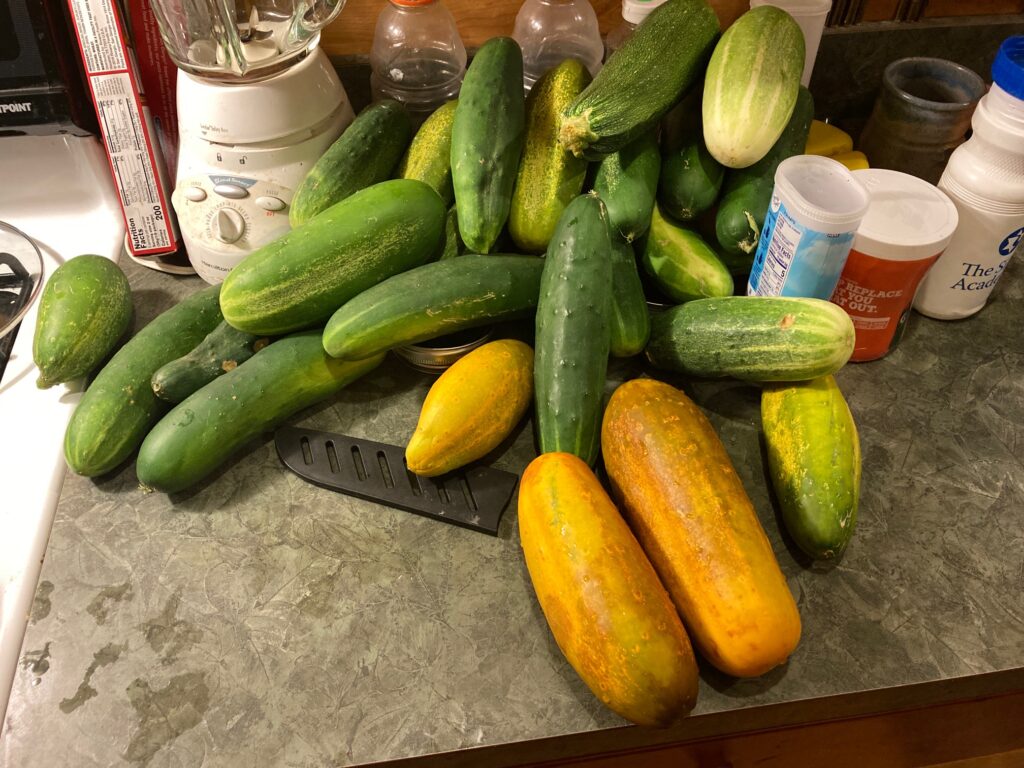
cucumbers from our garden don’t cost a dollar apiece like in the stores, and they are fresher and have no chemicals. Our home made pickles are far tastier than store bought, and have no chemicals. We use the overripe ones to make bread and butter pickles.
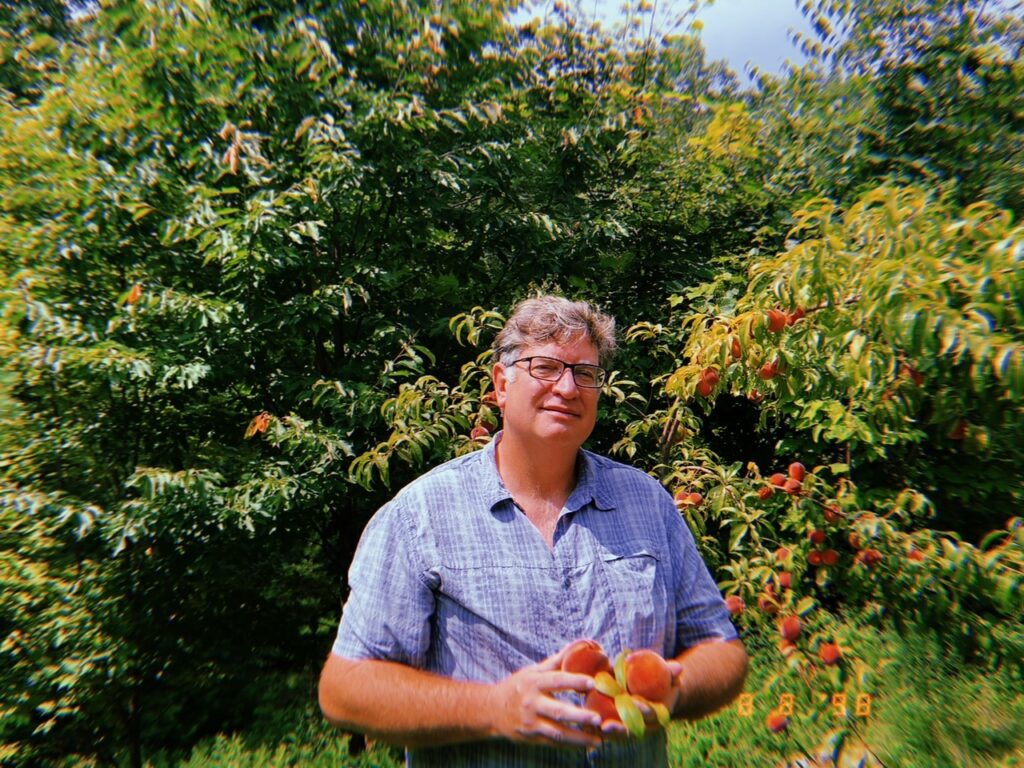
We have a bunch of peach trees. If the bears and the squirrels don’t raid them, we get to enjoy them, and cook with them, all year long
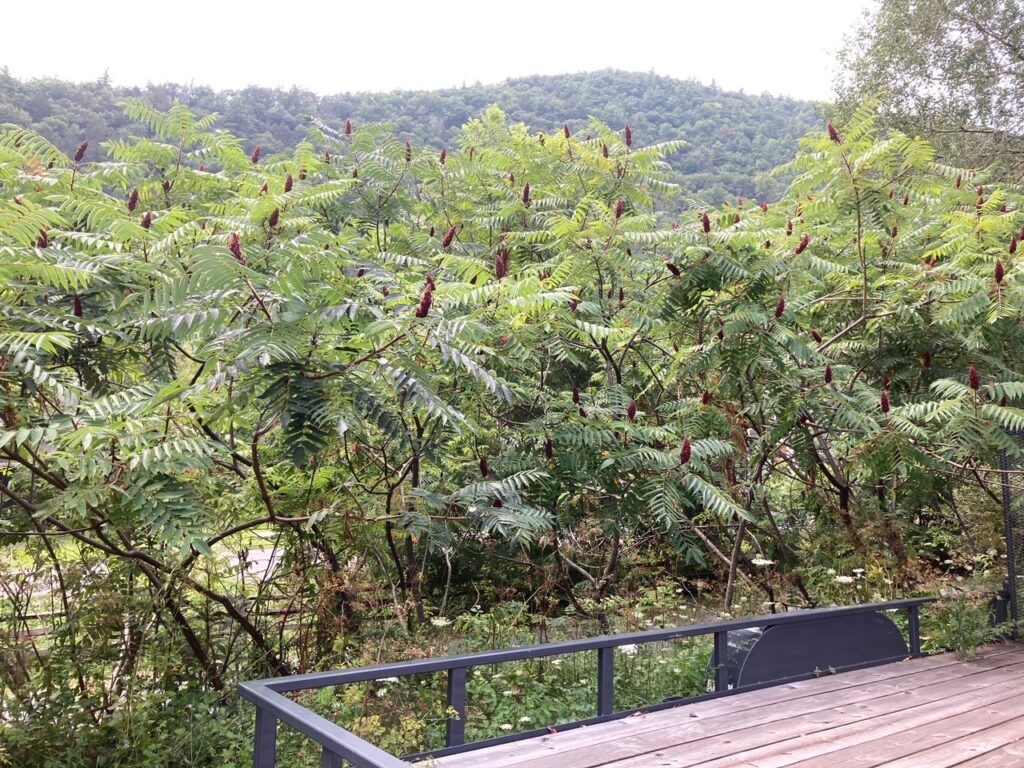
Sumac grows wild everywhere. Steeping a few heads in a bowl of warm water provides the most delicious drink possible. Chill it, serve it with sugar over ice, sumac tea is free, easy to forage, and chemical free
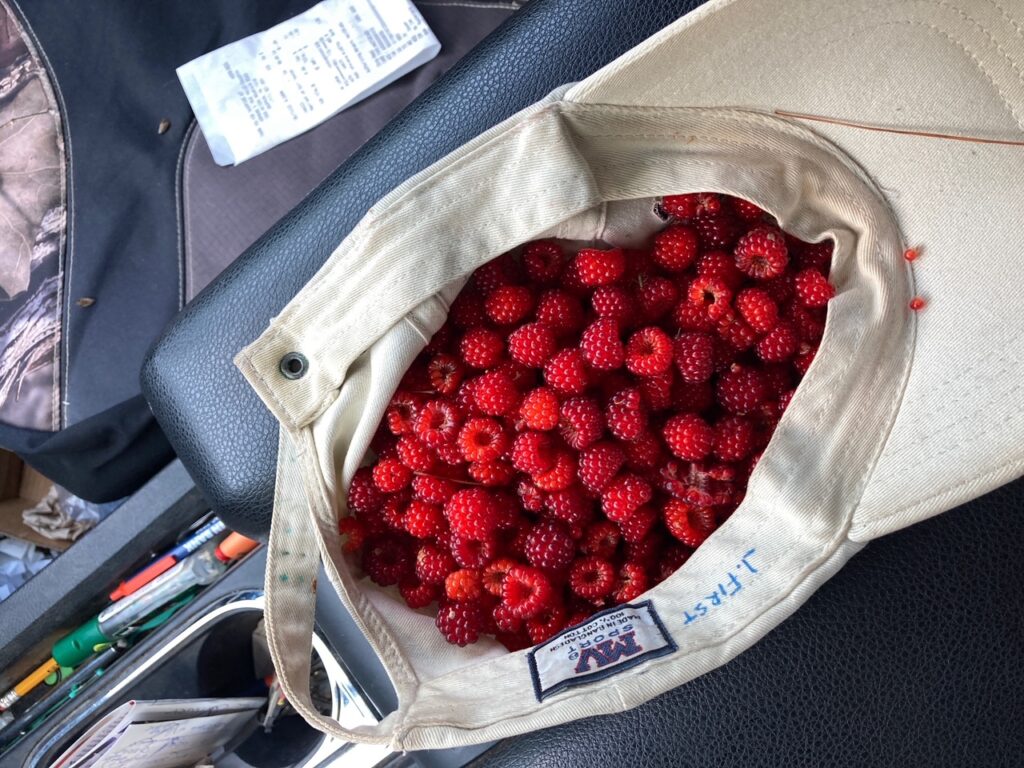
A hatful of red raspberries I foraged in July in the shrubbery of a public parking lot. IN a store you would pay twenty dollars for these wild ones, and they would be half as good. Go forage and pick your own food
Midsummer report
My apologies for the long absence here. Summer is in full swing and our family has been operating at full tilt speed. Time only for doing things, and none for writing about it all, until now.
First off, our oldest kid was married on Independence Day. Held at a pretty and historic farm, it was a fantastic wedding, and we feel like we acquired a wonderful addition to our family. However, the preparation necessary for that event took up a lot of time and energy, for many months. And then there was the recovery week. And then there was the vacation week. Hence no blog posts. Full credit to my wife for all of the wedding planning.
At least I myself am back in the saddle, while other people around me are still recovering from their vacation. Not everyone does well with the surf fishing bum lifestyle, including sleeping on the beach, eating questionable food from a warm cooler that has been pawed over and drooled on by feral raccoons, and drinking fetid water. I myself thrive in this kind of environment, and so I am back to report back to our three readers.
What can I say about the wedding other than I fired our small black powder cannon seven times, for good luck. It was Independence Day, and while the venue does not allow fireworks, they did allow the cannon (it’s a cast iron, steel sleeved replica swivel gun with a 1.75″ bore). And in my speech as the bride’s father, how could I miss an opportunity to point out that Independence Day was brought to us by citizens with guns? That is a fact, is it not?
And (of course, I guess) I heard back afterwards that some of our wedding guests were offended by the cannon and also offended by my mention of the origins of American freedom – citizens with guns. You can’t make this stuff up if you tried, like it’s a Hollywood movie script caricature of spoiled rotten children who get everything that Planet Earth can provide and yet nonetheless complain about it. Something like “The food here is terrible and the portions are so small.”
Are Americans now really offended by Independence Day fireworks? Are they offended by displays of patriotism and mentioning of historical facts that unfortunately run contrary to some evil political narratives that privately owned guns are bad and our freedom was brought to Americans by a immaculately conceived federal government that descended from Heaven? Are some wedding guests now so crass that they actually complain about the bride’s father setting off his celebratory toy cannon for the enjoyment of all the normal fun-loving people in attendance?
I have a hard time believing these things, but I did get to witness this stuff. America is in big trouble when its own citizens, young and old, hate its founding and can’t give a proud father his one moment and some space to celebrate it. Jiminy crickets.
Just returned from a subsequent beach trip to a a long spit of federally managed property on the east coast. The National Park Service rangers were 99% normal, nice, intelligent Americans, thank you very much, Gage, Donald, and Stephen.
In this national park there is a problem with artificially high numbers of deer, foxes, and racoons. They have no natural predators and they are multiplying at breakneck rates and having huge negative impacts on the environment and local ecology. Vegetation shows a distinct deer browse line about four feet above the ground, and the racoons are everywhere, aggressive, and aiming to ruin your trip. I watched a red fox steal a camper’s breakfast sausage meal right off of his plate on the guy’s picnic table. We had raccoons patrolling our campsite and under our table as soon as we broke out our food. They will grab your food right out of your hand. It is a fact that raccoons are host to some nasty parasites they excrete in their poop, which was abundantly displayed all around the campsites. Raccoons are also the number one vector for rabies among wildlife.
Aside from posing health threats and incessantly badgering the humans who are trying to enjoy the park, the foxes and raccoons also eat the eggs of rare nesting shore birds. These rare birds enjoy huge swaths of cordoned off human-free dunes and beaches in the park (and also on federal and state lands out on Long Island, like Orient Point and Montauk). And yet the same exact NPS staff enforcing the human no-go dune zones policy are absolutely fine with the overabundant nest-raiding foxes and raccoons that render all the no-go zones meaningless. The staff do not support hunting or trapping these destructive pests, either to improve the park visitor experience or to protect the natural environment.
How can the rare birds successfully nest on the ground and hatch their chicks there when the artificially super overabundant egg-eating raccoons and foxes are allowed to roam at will?
Talking with various National Park Service staff about this problem resulted in exposure to various levels of education and serious/unserious mindset. Most of the NPS staff acknowledged there is a wildlife problem on site that must be addressed. Hunting the deer and trapping the foxes and raccoons is the normal and responsible way to deal with this artificial human-caused environmental problem. These are the responsible and serious ways of addressing a visitor problem on land that is owned by the US taxpayer and whose management is entrusted to taxpayer-paid bureaucrats.
However, when I mentioned the above normal solutions to a young, handsome, tall NPS Park Policeman patrolling our campground, he responded “The same can be said about humans — there are just too many humans. And your solution to the overabundant raccoon problem is not humane.” He would get rid of the humans and allow the artificially high numbers of nuisance wildlife to proliferate. With taxpayer-paid federal employees of this guy’s low caliber and high wokeness quotient, the park visitor experience is going to degrade. C’mon, NPS, you can screen your employee applicants better than this. This foolish people-hating young guy should never have a gun and a badge, much less wear an NPS uniform.
Overall the surf fishing was fun if mostly unproductive. Probably due to the high heat and ferocious sunshine. I can report that catching cownose/ bullnose rays on strong surf tackle is a hoot, but then safely decoupling that animal from the tackle is a whole other thing. They whip their barbed tails around trying to nail the fisherman, who is trying to release them back into the ocean (I learned to place something heavy on the tail while using heavy pliers to remove or break off the hook). We did witness a large shark violently feeding close to shore, and it would be a fair guess to say it was probably eating these rays, which we caught and saw in abundance on both the bay side and the ocean surf side.
So that is the mid-summer report. Fast action, lots of family, some big family celebration and lots of family movement across the beautiful American landscape for work and vacation. I hope that you the reader are also enjoying your summertime. Summer is such a glorious time to be with family and friends, to visit new places, to camp out under the stars and cook over an open fire, to think through life’s normal challenges and to spend time with people we love…and then it is over just when we are all starting to really get into it.
So make the most of your summer.
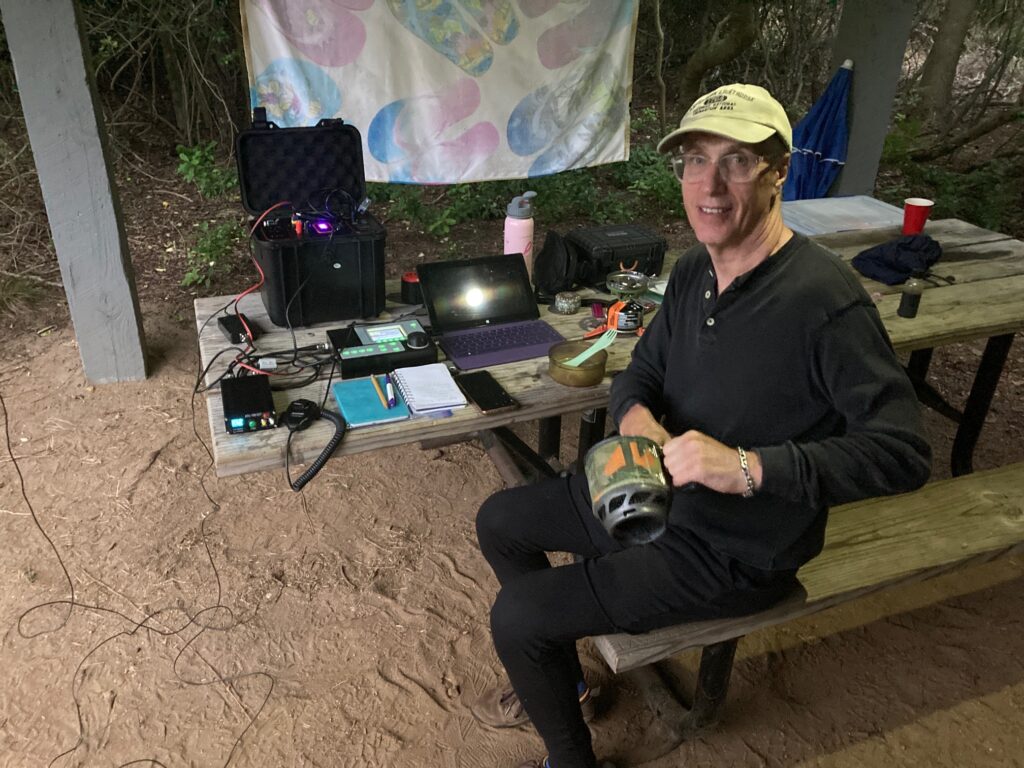
Campsite neighbor Steve, a PhD engineer ex-patriot Brit and defiant leftist, helped MAGA Maniac Josh fix my malfunctioning headlamp, demonstrating that it’s easy to be enemies when separated by keyboards and easy to be friends when living side by side
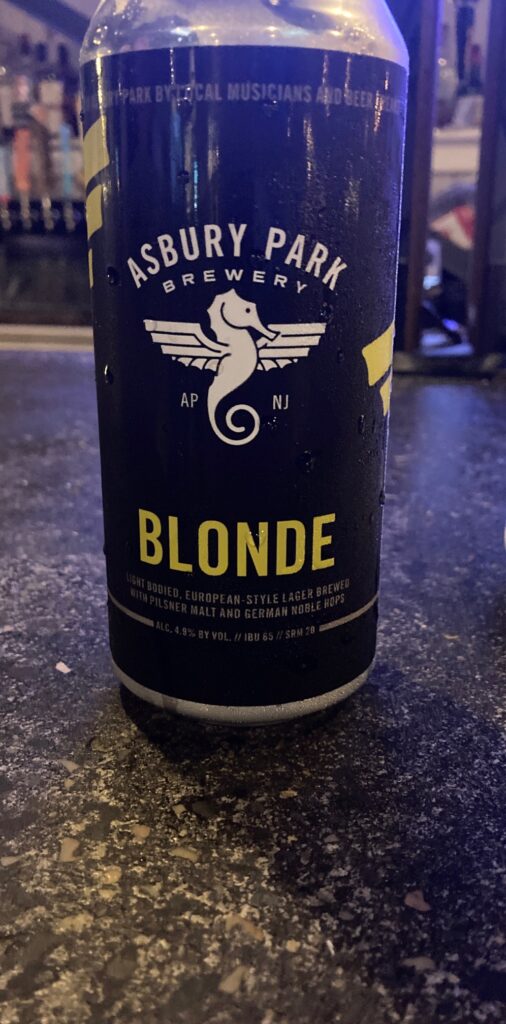
Asbury Park Brewery is a local flavor that I was happy to support. No sign anywhere of Bud Lite or Budweiser anything, thankfully

Symbol of foolish National Park Service policies seeking to protect rare shore birds by excluding people from their habitat, but allowing artificially overabundant populations of nest-raiding raccoons and foxes to roam at will.
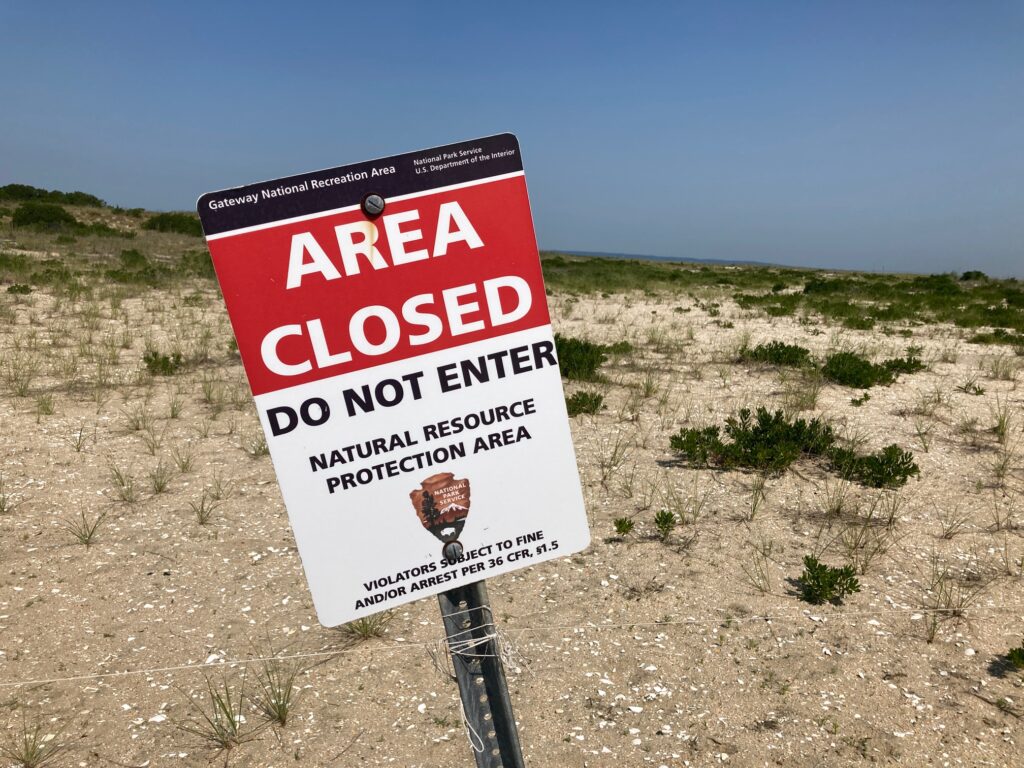
Beach goers nonetheless entered this area because there were zero nesting birds in it and there were literally tons of foxes running around in it. Come on National Park Service, you can do much smarter than this
How’d that go? PA begins online hunting license & tag sales
Today at 8:00 AM marked the first day of the Pennsylvania Game Commission’s true entry into the modern world of home computers and the Internet. This probably sounds like an unnecessarily harsh or even a commonly outlandish criticism of the venerable PGC, but it is a technological fact that today marks the very first step by the 1895-founded-and-minded wildlife agency into directly integrating with its customer base.
And it has not gone well, although it could have gone a lot worse. Monday end-of-business hours analysis shows the PGC website processing about 7,090 license purchases per hour. That is about 118 per minute, which is a lot faster than the roughly 1,900 licenses per hour purchased in the early time frame I operated in. Given all of the little moving parts involved, especially that carefully measured doe tag purchase, I guess I can see why this is taking longer than the two to three minutes total that each person expected to spend on it. It still frustrated me and others who are not at war with PGC.
The process has been marred by exceptionally long waits, both in-person at brick and mortar retailers and online, with lots of “system crashes” and people standing in line for hours, spawning humorous memes like the old and now former pink doe tag envelope saying “Miss Me Yet?” I like the meme of the skeleton passed out over the desktop computer “Waiting for my 21st century Internet purchase from the PA Game Commission.”
The truth is that this day had to come, sooner or later. The old double-stamped pink envelope US Mail process was increasingly marred by the US Postal Service’s incredibly ever worse performance, to the point where people were photographing piles of time-sensitive pink envelopes sitting in heaps in some post office rooms, waiting for who knows what or who knows who. No one likes to be treated differently than everyone else, and the pink envelope lottery was an idea from 1945 that worked when postal employees did their jobs. These days, the Postal Service is notoriously unreliable. We can’t have a doe tag distribution process that relies on unreliable people and institutions. Even when the applying hunter does everything correctly, his or her pink doe tag envelope might take a wrong turn at Albuquerque and arrive days or weeks after the last doe tag was distributed. Which greatly impacts the hunter’s plans and prospects for that upcoming hunting season.
My own experience today had me first sleeping fitfully all night like it was hunting season, and finally dragging myself out of bed and hunkering down by the laptop well before the 8:00 AM beginning of the online purchase process at www.huntfishpa.gov. Almost like opening day of deer season and sitting down at an ambush site. Except this process revealed itself as having actually started well before the appointed 8:00 AM hour, as I was number 7,023 in line when I signed into my PGC huntfishpa account. With barely any coffee in my veins to buffer this unhappy revelation, an ice cold shock ran through me as I realized I was both early and yet already very late to the process. Thousands of hunters were ahead of me in an online process that was unknown, untested, and sure to have its ups and downs and delays.
The big ticket item for most of us early applicants is getting the doe tag of our first choice Wildlife Management Unit. It is why we stayed in the game til the very end. And the numbers tell the tale: My own first choice, WMU 2G, sold 17,000 doe tags by 5:00 PM today, about twice as many doe tags as any other WMU. There is a strong fear in a lot of guys that if you don’t get in line early either online or at a store, you won’t get your coveted doe tag in your primary hunt region. Fact is, with the ever popular northern “Big Woods” WMU 2G, that fear is well founded. There are many more hunters wanting WMU 2G doe tags than there are WMU 2G doe tags to hand out. The early bird gets this worm, every year.
[UPDATE: At 9:42PM I looked at the doe tag numbers and 23,502 WMU 2G doe tags out of the 35,000 total allocation for that WMU have been sold so far. A sale rate far beyond any other WMU. This means that 2G will be sold out by Tuesday early morning hours. The hunter demand for Big Woods 2G tags has always been high, we knew it, and now we get to see how that demand plays out when the hunters themselves are put in direct control of their tag orders]
Four hours and ten minutes later, having obsessively hovered over my laptop screen the entire time while emailing and bitchfest-texting with friends in both better and worse positions than I, I finally had ordered my general hunting license plus all of the additional license and permits I get, like furtaker (trapping), the annual elk application (I will take anything ya got anywhere ya got it), muzzleloader, archery, spear, atl-atl, sling, blowgun, black bear, fisher, bobcat, armadillo, hog, dog, rat, bat, and zinjanthropus tags. And yes, I got my WMU 2G doe tag, which enables me to hunt the way I enjoy most – solo pack and rifle and maybe an overnight and campfire somewhere way off the beaten path and far from roads and people, and the promise of a long and heavy pack-out of boned-out meat with a single doe’s ear and a completed tag attached. This kind of hunt is the most rewarding among big game hunters everywhere. Guys sitting in warmed box blinds overlooking fields and ravines have no idea.
So yeah, I waited and waited to ensure I got that 2G doe tag. A lot of my Big Woods hunting depends on it.
Anyone old enough to pick up on the Bugs Bunny theme above will understand where I am coming from; it was a loooong and kind of zany morning. In this day and age of Amazon and eBay and Gunbroker one-stop-shop badda bing badda bang badda boom go online and it’s yours two minutes later, Pennsylvania’s entry into the online hunting license world was practically Stone Age. New York has about as many hunters as Pennsylvania, and I have never encountered anything like this when I order my hunting license and tags from NY. It is usually immediate. Even Kentucky’s online hunting license and elk tag application process is faster than ours was today.
I am not picking on Kentucky….but come on, we all know it, Kentucky is not known for being especially technologically advanced. And yet….!
On the one hand, we must must give PGC credit for taking the long step out of 1895 and into the computer and internet age. This step the agency took this morning was one small step for PGC and one giant leap for hunterkind, or maybe the reverse, or whatever….. something like this. It is a big deal and I send you guys three cheers. Three grouchy cheers. Let’s not do this again, OK?
Yes, today’s license purchase has been marred by delays that seem unacceptable, but we all know that the PGC’s public employees have way too much pride to let this situation continue. It is a fact that a lot of employees and contractors will be working all night on this new system, and that by the time 8:00 AM breaks tomorrow, a lot of the glitches and delays we experienced today will be a bad memory for some, and a non-experience for a million others.
If you are going to hunt flintlock, you must practice, practice, practice
Flintlock hunting season ended in southeastern Pennsylvania two weeks ago, and for those hunters who had either not yet harvested a deer or, who, in the alternative, are usually highly successful, it was a last ditch chance to fill a doe tag or the unused buck tag. I know full well from my own feeling, as well as from hearing from other hunters similar to me, that despite having a good season (I killed four deer in two counties. One with a percussion rifle in October, two in rifle season with an open sight 308 Ruger RSI, and one with a flintlock in January), that sense of lost opportunity hangs pretty heavy. Perversely, the more successful a hunter is, the more successful he feels he must be with all remaining tags and opportunities.
In the old days (of my youth and long before then) that lost opportunity was called the “horse collar,” and however we might describe this nagging feeling, it can be a pretty tough driver. Guys (definitely guys only; women are too smart or doing too much real, important work to act this way) will just throw themselves into the late flintlock season hard. That unused tag weighs heavier and heavier as the season winds down, the deer get so much more skittish, and we feel the last opportunities to prove ourselves slipping through our cold gloved fingers.
On top of the usual limitations listed above, I unnecessarily handicapped myself badly before flintlock season started: I failed to practice shooting with my flintlock ahead of time. If there is one hard fact chiseled in granite about flintlocks that everyone knows, it is that they require regular practice in order to shoot them half decently. Especially before hunting big game with one. Not just because they require lots of little pieces of metal and a rock to all quickly and seamlessly work together to make the barrel go BOOM, but because a big flash of flame and smoke goes off right in the shooter’s face.
And that big flash in the powder pan in your face makes those people who have not practiced and become used to the flash flinch badly. It is natural to flinch your face away from a fiery explosion. And when you flinch, you are sure as shootin’ gonna miss. Hence the moniker “flinchlock.”
And flinch-miss I did this past late December and early January. A lot. Missed a deer in Lycoming County, missed a whole bunch of times in Dauphin County, including a dandy buck. In fact there was one doe I missed three times on three days in one week with two different flintlock rifles, all from close range. All because I had not practiced before the season.
When I finally did take a deer in the late season, it was because I had patterned him, a huge buck, all year, and I had just encountered his tracks and knew where he was likely to come in to investigate the smell of a late season doe in heat. And in fact he did show up, right where he should have come. At first he was just a faint shadow within many shadows in the big forest’s early morning half light.
I wasn’t even sure he was a deer when he first showed up. He just appeared, then stood behind trees, then behind a bush, looking around intently, never offering a good shot on his vitals. When he finally stepped into a shooting lane, I knew it was him only because of his enormous body and the improved daylight that let me take in the steer-like curves of his shoulders and hindquarters.
His huge 150 inch class antlers had prematurely dropped (which this year seemed to be the rule across northern and even parts of southern Pennsylvania), and then he, too, dropped. The round ball hit him square on the ribs and took out his lungs and the very top of his heart. After a late season of many misses, it is OK to admit that I only hit him because I had the rifle on a solid rest and I was seated. And that by that time I was not surprised when the flash went off with the BOOM of the rifle, but rather I was cool as hell and stayed looking straight down the barrel with good hold-through, watching him kick a few times through the smoke cloud that enveloped us both.
I do not name bucks, because it does not appeal to me to do so. But I still knew who this buck was from having encountered him several times over the past eight years. Several years ago I saw him twice in bear season, and his rack was good. In 2021 he came in to investigate some doe pee on a remote hillside, alongside a smaller deer with an unbelievably symmetrical ten point rack. I took the perfect rack and watched the bigger one run off. By January 2023 he had not an ounce of fat on his entire brute body whose hide will square twelve feet. He also had a huge rotting hole in one hoof (his hooves were each the size of my hand), and no teeth left on his jaw. This sagacious deer, whatever his name was, had attained the rarity of great grandfather status in the woods, and regardless of how cagey he was, his days were numbered. One way or another, he was destined to die soon.
Despite looking several times in the right places for his shed antlers, they did not show themselves. Possibly because a utility line right-of-way clearing crew had come through ahead of me. But who cares about finding his big antlers, right? His immense estimated ninety pounds of meat is right now feeding two families, and I shook off the horse collar from all the prior missing I had done.
Learn from my mistake: Practice, practice, practice with your flintlock before the season. And then the day before season opens, snap a couple of pans of priming powder on an empty barrel while aiming at a picture on the wall. Just to keep from flinching and missing.
And one more thing: Flintlock hunting attracts me intensely because it requires all of the skills a real hunter must have to be successful. Open sights, hold through, stealth and good wood craft, patience, etc. This is real hunting. There are no unethical lazy long range assassinations of unsuspecting wild game with a flintlock.
Oh, and one more thing: Apparently the Super Bowl starts soon. Super Bowl? Never heard of it. The NFL lost me a long time ago, in 2016 to be exact, with all of the anti America kneeling crap. And apparently tonight there is supposed to be yet another woke racial song sung at halftime. My time is worth much more to me than to spend it on and with such useless people as this. Instead of watching this game played by spoiled brats, I will be building a new work table.
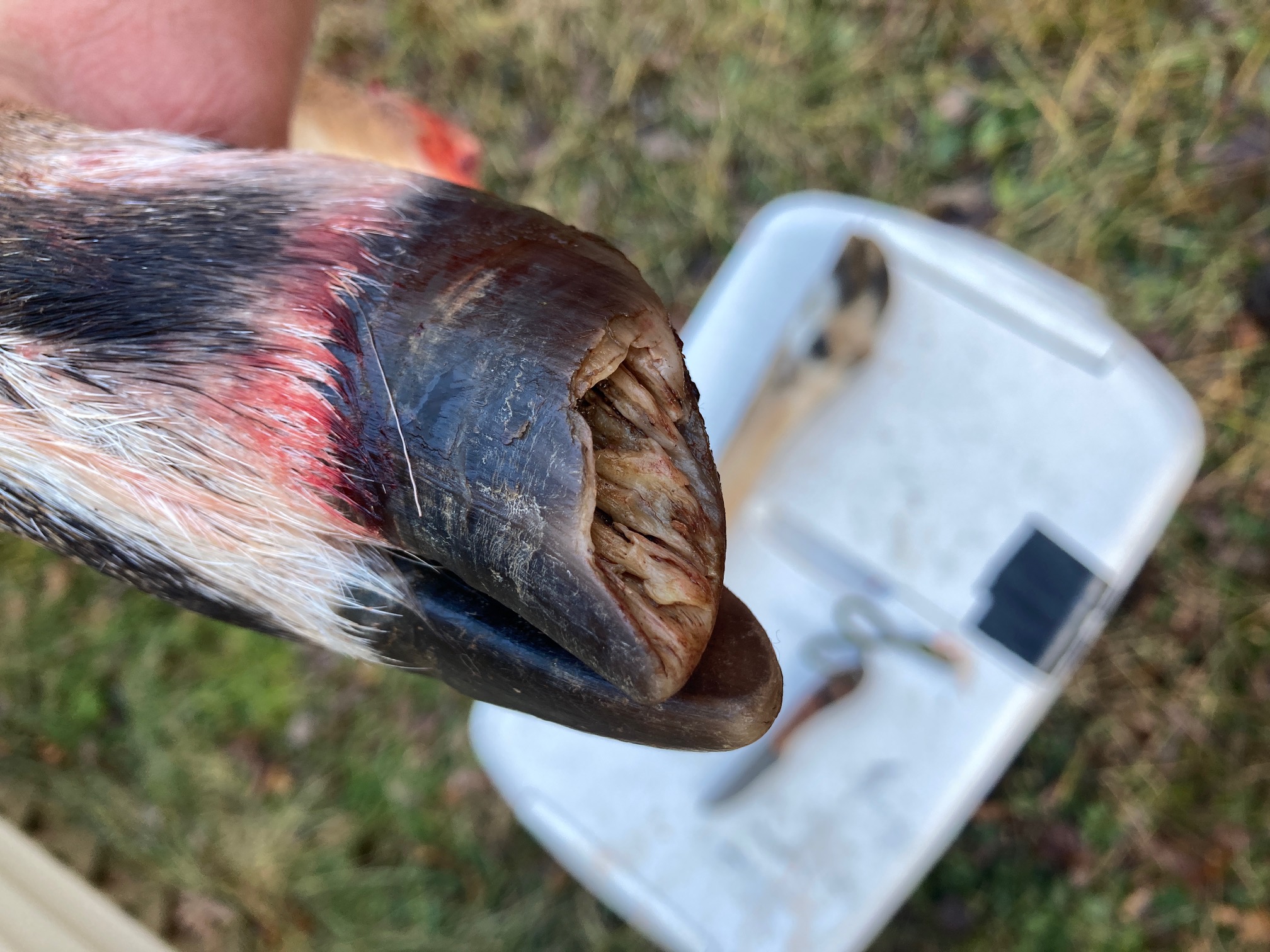
Huge old deer had weirdly rounded hooves and this big rotting hole in one hoof. His entire leg above this was enlarged, probably infected. All of his teeth were gone, completely worn down. His belly was full of grass, because he was unable to browse brush any longer.
Advice from a deer
As sure as the sun rises, there is sure to be complaining among hunters about the state, condition, blood pressure, and dental hygiene of Pennsylvania’s deer herd. In fact, you can’t escape the topic if you spend any time, like even a minute or two, in the company of devoted hunters. No matter who I am standing around, next to, or in line with, the complaints begin to flow about the Pennsylvania Game Commission and its deer management.
Despite being highly skeptical about government in general, and therefore despite keeping an open mind to complaints about government failings, I find myself repeatedly unpersuaded by these deer management complaints. While not quite ranking up there with UFO sightings or insistence that PGC has helicopter-imported mountain lions and coyotes to eat the deer, the fretting and nail biting and angry denunciations always seem to lack key aspects of any serious argument.
For example, for twenty years I have heard that Sproul State Forest harbors no deer. Then last year I easily killed a deer standing right at the edge of Sproul State Forest, and saw many others. This November, I hunted elk in Sproul State Forest and State Game Lands 100 in northern Centre County, and found myself endlessly surrounded by deer, from dawn until way past bed time while driving. Conventional views that these deer do not exist are easily reinforced around bar stools, but I have found them easily and quickly disproven in personal contact with the deer habitat itself.
One of the real challenges to Pennsylvania deer hunters is the change in deer herd size and behavior since 2001, as well as the maturing of our forests since the 1970s, when a lot of today’s older hunters were really getting into the lifestyle. A hunting culture based on sitting in one place and watching unsustainably sized deer herds migrate by resulted, and now that most rural deer herds have been lowered, just sitting and waiting is not enough. Especially when the mature forests we now experience are devoid of any acorns for the second year in a row.
In 2021 a late frost killed the oak flowers in northern PA, resulting in no acorns up north and spotty acorn crops in the south. In 2022, rampant gypsy moth infestations across the entire state denuded entire oak forests of every leaf and flower, which has again resulted in zero acorn production across a great deal of Pennsylvania’s forests. If you are inclined to blame people for things that are mostly out of people’s control, then I suppose we can point out that PA DCNR seemed to hold back on gypsy moth spraying in 2021 and 2022. Had DCNR sprayed more, then the state-wide acorn crop failure we now behold probably would not have been as bad.
The fact is that a great many of us started sitting or walking in beautiful mature forests this past Saturday or Sunday as PA’s deer rifle season opened up, and found ourselves marveling at the incredible silence greeting us. Hardly any bird activity. Maybe one squirrel seen all day, and certainly no bears and few if any deer. This is the result of there being nothing for anyone to eat in the woods.
So, unless your woods escaped gypsy moth damage and has acorns, get the heck out of the woods and go find brushy and grassy areas where deer can browse. Utility rights-of-way and clearcuts are the best places to find deer this season, and in fact the only person I know of who killed a deer anywhere near me yesterday (Sunday) was an older guy in a deer drive through a beautifully overgrown overhead powerline right of way. His hunting party also reported seeing eight does with the now deceased buck, none of which they shot.
Yesterday, while I was sitting miserably sick in my covered stand and waiting out the miserable cold rain and wind, a deer in a top hat and silk gloves happened by and gave me the following advice:
In general, access your hunting area well before sunrise and start every deer hunt with a quiet Sit from 6:30-9am, overlooking some promising travel corridor, funnel, or feeding area. Then slowly and quietly Still Hunt into the wind or quartering into the wind until lunch time. Then Sit down and eat lunch quietly, while overlooking some promising location through which wildlife regularly pass or eat. At 1pm pack up the lunch stuff and Still Hunt again slowly until 3:30pm, and then find a good spot with good views and shooting lanes and Sit quietly until 15 minutes before shooting light ends. Then slowly and quietly walk out, and maybe kill something on your way back to your vehicle or camp, only unloading your firearm when shooting hours have officially ended.
I myself am about to suit up for a long and slow stalk through some brushy utility rights of way. Yes, they are now wet, and always steep, and the going is tough. But that is where the deer are, because that is where they can eat and survive, and I am hunting deer so that I might actually kill one.
The deer and I must meet in person in order for this transaction to happen.
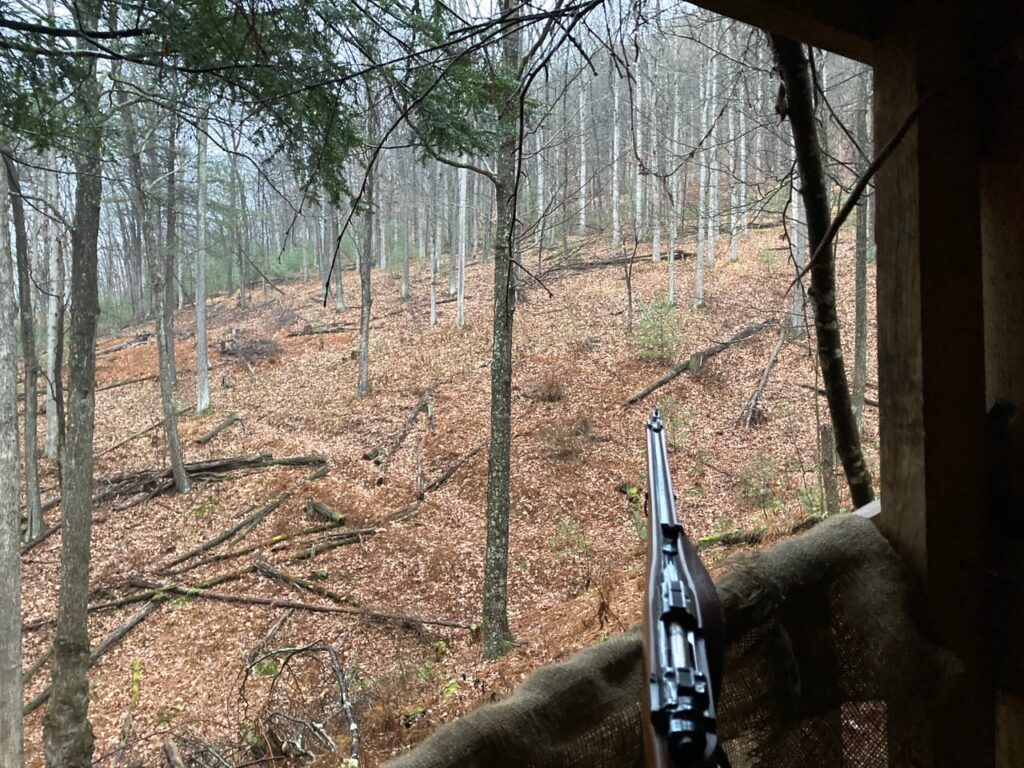
As much as a covered hunting blind may be a necessity when the hunter is sick or the rain is pouring down, the fact is this not really hunting. Slowly and quietly walking into the wind through good deer habitat with your firearm at the ready is real hunting. Do it.
PA elk & bear seasons now behind us
You can spend all year excitedly anticipating a few days here or there, and before you know it, those days arrive, they happen intensely, and then they are over like a dream.
This dream we speak of here are the various big game seasons that are such a big part of so many peoples’ lives, entire families and communities, entire businesses (I think hunting is an annual $1.6 BILLION business sector here in Pennsylvania). Thus far we have had an elk season and now the main bear season pass along. Here are some of my thoughts on these two wonderful experiences.
First, the elk hunt.
I was fortunate enough to draw a coveted PA elk tag, after applying for many years and building up a lot of preference points. The lottery drawing was announced in late August, and I immediately began planning. The general elk season is just six days long, and unless you are going to engage a guide for a few thousand dollars, you have a lot of work to do before setting foot afield with a gun. If you draw a bull tag, paying a guide is worth it.
After a tremendous amount of analysis and planning, and some September scouting, I was fortunate to hunt for elk with some good friends and a .62-caliber percussion rifle over my shoulder in Elk Zone 13. We camped out on a log landing in Sproul State Forest, with elk all around us, and each buddy scouted hard each day, looking for elk that the sole hunter (me) could get after.
Elk Zone 13 is huge, and contains a lot of vast public land. And so the elk harvest data shows that it is a bit of a Death Valley in terms of hunters actually killing an elk within it. While a lot of Pennsylvania elk hunting takes place briefly where a lot of the local elk have pet names and are used to being around people, there are a few elk zones where the opposite is the case. Zone 13 is one of those opposite cases. It is a tough place to hunt under any conditions, and under the rainy, warm, and very windy conditions we had, it was just about impossible. In the end, just one of three bull tags there was filled, and as of the fifth day of the six day season, just one of the six cow elk tags had been filled. I was not one of those people lucky enough to fill my elk tag.
And it was not a harvest failure because we didn’t hunt smart. We hunted so smart that we were bumping into elk guides and their clients at every turn. We had done our homework ahead of time, and we knew where the elk were likely to be, which is where you will find an elk guide, too.
One of the things I did as part of the analysis and planning phase was was plot all of the past elk harvest data on the large Elk Zone 13 map the PA Game Commission sent me. Once your eyes see exactly where the elk are killed every year, almost always in large clusters, over the past seven years that Elk Zone 13 has been around, you recognize where to concentrate your field scouting efforts. And then our subsequent field scouting efforts confirmed the presence of elk, including the day before the elk hunt started.
Like I said above, the weather conditions were awful for any type of big game hunting, and especially with a primitive weapon such as I carried. My effective range was 110 yards, and 75 yards was a lot more preferable. But range doesn’t matter if you can’t get an elk to stand broadside for a few seconds. I did mix it up directly with an elk herd that was hiding in a forest, and I did call one close back to me, and I did get a couple good setups on moving elk. But the seesawing winds gave away my presence each time, and the elk stormed off each time. Like I said, I had a wonderful time with good friends in a beautiful place with a fantastic gun over my shoulder. Elk or no elk in the hunting bag, I had a great time hunting elk in Pennsylvania (an especial Thank You to the many private landowners who generously granted me access to their properties to hunt elk).
Now, bear season.
Bear season ended yesterday, and the last of the bear hunters grudgingly left the cabin today. As usual, we had a large crowd gathered here, with everyone happy to catch up with chums from years past, sharing good food and good drink and good cheer. One thing all hunters eventually begin to notice is that with age comes a mellowing of the spirit. The chase is not as important as simply being present in God’s creation, often communing with Him in the largest house of prayer anywhere, the mountain forest cathedral.
And so fewer and fewer guys are coming here to hunt, and more and more guys are here to relax. And that is OK.
We who both communed with God in the mountain forest cathedral, and who also hunted, saw no bears and only a few deer. Mostly because there are no acorns in the woods, and all wildlife must go where the food is. If there is no food here, there are no bears here. Gypsy moths devastated Pennsylvania’s oak forests this past summer, and so there were no oak flowers to turn into oak acorns to fatten up buck and bear, squirrel and turkey. The woods was totally quiet this week, and it made me wonder what a squirrel migration looks like. Do hordes of mountain squirrels move en masse into suburban yards in lean years like this one? And where the heck do all the bears hibernate?
Roughly 1,450 bears were killed in PA’s early archery and muzzleloader seasons, and so far just under a thousand bears total are reported for this week’s bear rifle hunt. Usually this week’s four-day hunt results in an enormous bear kill. We are now looking at an epically low bear harvest in a state with a huge and burgeoning bear population that needs managing (Just a few days ago New Jersey issued an emergency bear hunt approval, because The People’s Republic of New Jersey is being overrun with bears, which unfortunately cannot be trained to eat liberals but whom the liberals recognize as a natural predator and are seeking to reduce out of self defense).
Another thought a lot of people are sharing today is that the early bear seasons, archery and muzzleloader, are very effective, so that come the late November bear season, there are a lot fewer bears to be had. Bears that are facing both extreme hunger AND extreme hunting pressure will den up early to get out of the storm. It seems a lot of the bears that survived the early seasons arrived in a bleak foodless November and said an early good night until March, 2023.
Next up is deer season, another dream time. And our deer patterns are also all off kilter here, so it is going to be a very interesting deer hunt in the mountains. Again, it’s no acorns, no deer. Except for that one gigantic buck I saw a couple times….stay tuned for that report. Let’s hope it makes up for the no elk and no bear reports we already filed away for 2022…
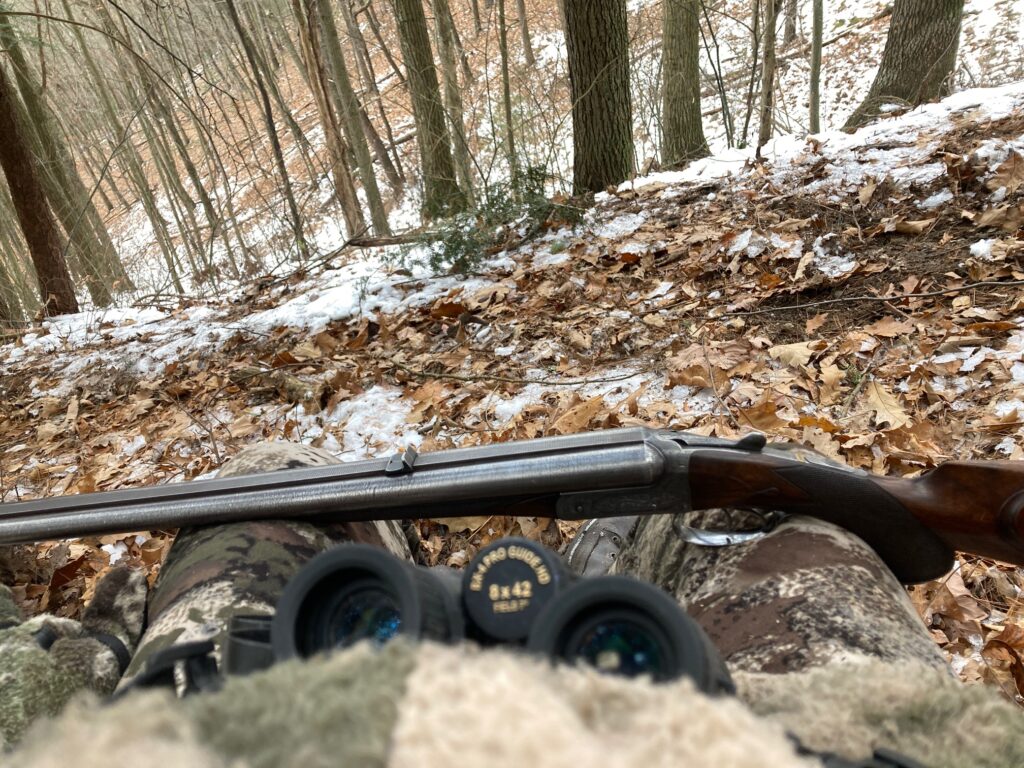
An 1884 double rifle made for tigers in India would be great bear medicine. If only a bear would appear.
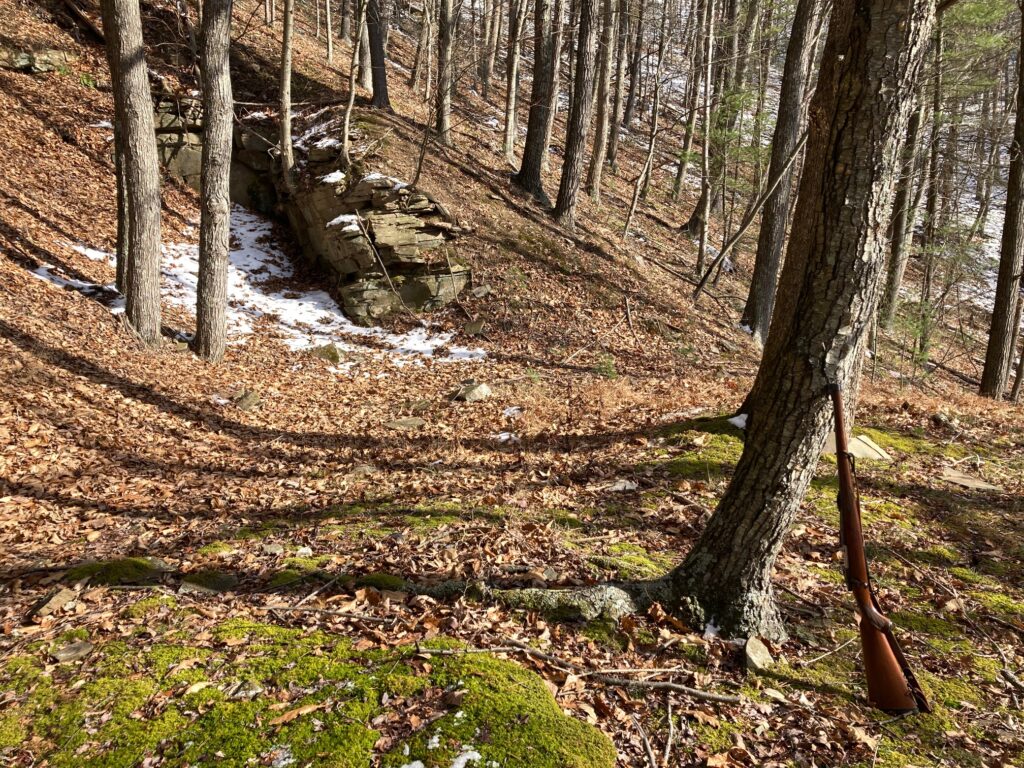
This remote old mine is one of dozens that dot our mountains. It is a fine place to hunt, take a nap, or write in a notebook. A couple times I have done all three in one visit.
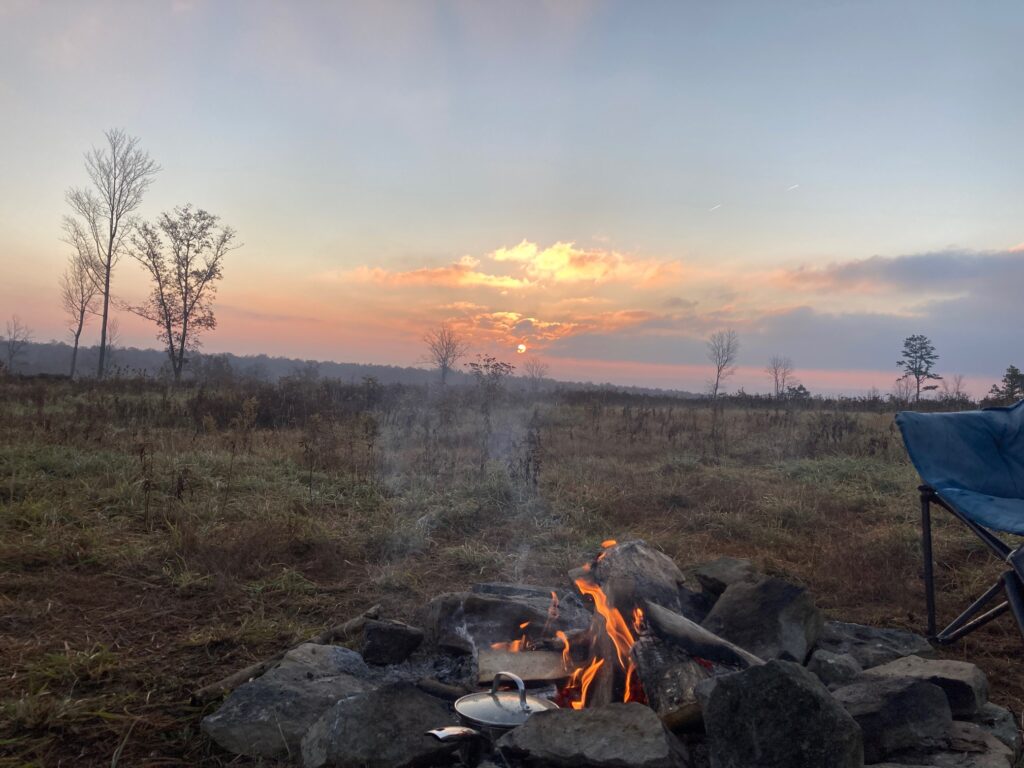
Camped with friends on an old log landing in the Sproul State Forest is a wonderful way to spend life’s limited time, elk or no elk in the bag.
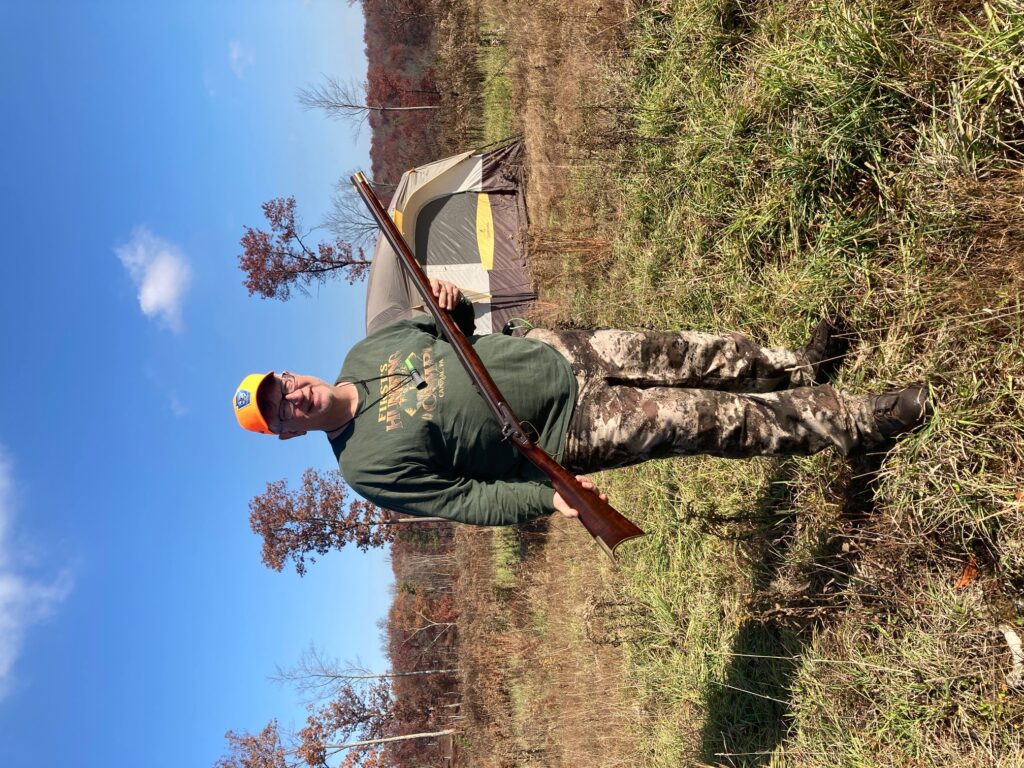
A great way to spend a day hunting elk, with a beautiful .62 caliber rifle (not a smoothbore) made by Mark Wheland here in PA. With its 335-grain round ball, it is easily capable of cleanly taking a hearty elk.
We interrupt our regular political bickering to bring you Deer Season
People who don’t hunt may think they have some serious political differences. Well, they have not yet gotten involved in the Pennsylvania deer hunting wars, where fifteen years ago PA Game Commission board members and senior staff believed they had to wear bullet proof vests to public policy gatherings, such was the intensity of hate and vitriol…over deer.
With deer archery season ending Sunday night (our first Sunday hunt of the year) and deer rifle season just two weeks away, what better time to interrupt all the political acrimony from Tuesday’s mid-term election and introduce people to some real genuine debate. Yep. About deer.
Last week PA Governor Tom Wolf signed into law a change to the annual antlerless deer (doe) tag purchase system that only took twenty five years of bipartisan effort to achieve. All too well are Pennsylvania hunters familiar with the gigantic pink envelopes that screamed out to anti hunting Postal Service employees “Throw me away, throw me away!”
The gigantic pink envelope doe tag application system had been in place since the 1970s, and the system that was implemented in the 1970s was only a slight modification of the doe tag allocation process from the 1940s. That is how freaking backwards one major aspect of PA’s deer management program has been…hunters living in 2022, but operating in 1945.
And yeah, aspects of 1945 were great improvements over the sinking cultural ship nonsense we have going on today, but the gigantic pink envelope doe tag application lottery was not one of them. In the era of the Internet and email and texting, the now discarded doe tag system relied upon an unreliable Postal Service, two licked stamps, a check, multiple folds in the gigantic pink envelope, exactly the correctly checked boxes, and hoping your application made it in on time, or No Doe Tag For You!
And for most deer hunters, having a doe tag is a really big deal, because the harvest rate on does is about forty or fifty percent, while the success rates on wily bucks is about fifteen percent. Having a doe tag meant a much higher likelihood of getting fresh and healthy venison for your family and personal enjoyment. And not having the doe tag, because of some ridiculous minor bureaucratic rule or unchecked box in the application, was a big deflation for many a hunter.
Now we are going to have an online doe tag lottery and application process. No more photos of gigantic pink envelopes stacked up in Postal Service back rooms, waiting to be sent in weeks after their best-by date.
What is the doe hunt all about? It is about managing Pennsylvania’s over-abundant deer herd so that the non-hunting public doesn’t start to think that we hunters can’t get the job done right. It is a big and important job. In Europe, if wild game populations get too big and begin causing agricultural damage and car crashes, the local hunters actually get fined for it. Here in PA we have an enormous impact from too many deer, and a gigantic whiny peanut gallery that wants even more deer. Much more than the landscape can feed or than the public can afford to pay for.
Deer population management is done by the PA Game Commission. PGC uses hunting harvest numbers, statistical models, and input from individual hunters, hunting groups, landowners, farmers, “birds ‘n bunnies” environmental groups, and timber companies. One of the loudest voices is from hunters who want to see more deer, but who don’t care about the cost that those deer impose on other people. It is a tough job, requiring PGC to balance a lot of competing interests.
I am always surprised to hear hunters complain about PGC’s deer management, because invariably these critics really don’t know the actual mechanics of how it is done. Nor do they bother to take the time to learn the mechanics. Nor do they take the time to go on a local State Game Lands tour, to understand about deer impacts on the landscape. Instead, these hunters behave like communists and demand that everyone else provide year-’round room and board to the overabundant deer that they want to experience for just a few days a year. As much as I love our hunters, I am getting more and more cranky with them in my old age. Guys, please get educated about this subject, or just leave the adults alone.
This summer my wife and I drove out to Colorado and back. We passed endless deer roadkills on I-76 on the way out, but from the Ohio border westward, we saw just two dead deer on the side of the road. One in Iowa and one in Nebraska. On our way back to Pennsylvania, we saw no roadkills anywhere until we crossed into PA on I-80. Literally within the first mile of entering PA we began counting the freshly dead deer, and we continued that counting all the way home to central PA.
This Fall I hunted elk in northern Centre County and western Clinton County, and we saw TONS of deer every single day. This northcentral PA area is supposed to have no deer since 2001, if the official lazy stumpsitter hunter assessment is to be believed. The fact is, both PGC and DCNR have done fabulous jobs of clearcutting large blocks of forest, which has resulted in perfect habitat for deer and a bunch of other important animals. A hunter simply must get up off his butt and go do the Elmer Fudd hunting thing, nose into the wind. If this is too difficult for you, then deer hunting is not your thing.
I have hit several deer on the road in the past two years, each one doing expensive damage to my vehicles. My friend Mark just totaled his expensive sports car on the PA Turnpike 110 miles west of Harrisburg, because a deer walked out in front of his 70 MPH missile. He texted that the tow truck driver said that his was the sixth deer collision the tow truck operator had to address in 30 hours. That is just one tow truck in one small area, and so we know (and see with our eyes) that the deer collision problem is enormous, and expensive, and unnecessary,
Hopefully with the elimination of the gigantic pink envelope the PGC will also change the way it issues doe tags and the number it issues. I hunt all over PA and my opinion is, you can’t really issue too many doe tags. Especially in the southeast part of the state. WMUs 5B, 5C, and 5D should have unlimited doe tags. Apply for one and get one up until the end of the season.
There are so many deer everywhere, and all of them are causing enormous damage and highway carnage. This is presently a hunting problem to be solved by hunters, and unless PA hunters want to go the way of Washington State, where hunting as a wildlife management tool is being taken off the table, they had better step up and do the job and fix the problem.
Sayonara, Gigantic Pink Envelope! We won’t miss ya! And now that that problem is fixed, let the deer wars bickering begin about doe tags all over again. One camp living in 1945, the rest living in 2025. Can’t wait…..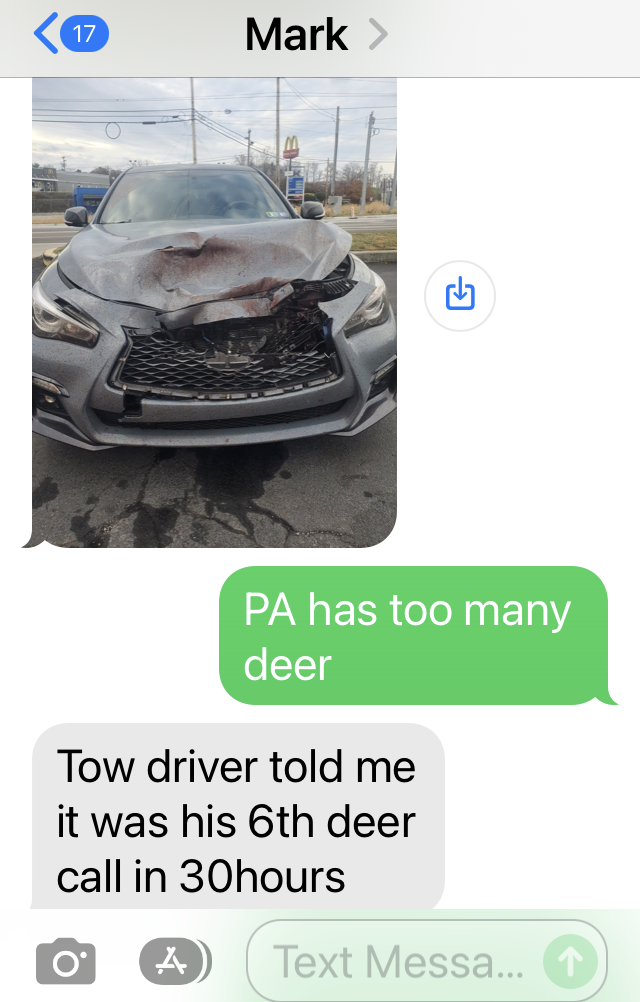
Anatomy of a deer season
It doesn’t matter if you archery hunt for deer religiously, from October 1 to mid-November; the archery season is always over way too fast.
It doesn’t matter if you archery hunt a bit for bear and deer, hunt the week of early muzzleloader for bear and doe, do some small game hunting, have the men up to camp for bear season for four days, and then hunt every day of deer rifle season. The ending is always the same: It ended way too fast. We wait all year for this time, and before you can blink an eye, it is over.
For many hunters, this time is about being afield, hunting. The occasional actual killing part is a welcome indication that the hunting part was done well. Proof that the time spent outside was not wasted.
Oh, we still have some late deer season remaining, which is the late archery and flintlock hunt. But by now, deer everywhere in Pennsylvania are on high alert. A twig falling out of a tree and rustling a leaf on the ground will send a nearby deer herd into panicked stampede into the next county. So getting deeply enough into the sensory zone of these intelligent animals to take one with a bow or a flintlock at this stage takes real skill, not just the usual luck.
Although I will hunt the flintlock deer season, because I have some DMAP tags left, looking back even now with a sense of longing has me thinking about the anatomy of a good deer season. Some take-aways:
- Eat good food. Whether it is home-made jerky and dried fruit we make ourselves for our own time afield, or it is the extra thick gourmet steaks we bring to hunting camp, eat the best quality food you can afford. Hunting alone or with friends and family is a celebration, so eat like you are celebrating. And because Man does not live on bread alone, make sure your drinks are of a commensurate high quality.
- Practice, practice, practice with your gun. Archery hunters practice non-stop, but for some reasons many gun hunters leave it to one box of ammo and the days right before the season to “practice” shooting. Well do I recall sharing a range with a guy from Lancaster County at the bench next to me. Friendly enough, he enthusiastically, if spastically, launched his one box of “extra” shells down range as rapid fire as a bolt action can fire. I had offered him the use of my spotting scope and Caldwell shooting sled, and he declined. He did end up relying on my spotting and calling his hurried shots, however, because he didn’t quite have his scope figured out. The old random “spray n’ pray” is the approach he packed up and drove off to hunting camp with. Do any of us think he hit what he shot at?
- Bring your best jokes, naughty or practical. Hunting camp is fun, and each of us must contribute to that festive atmosphere. Many years ago, I bent down to inspect a strange looking object hiding under the cabin’s kitchen counter. And just as quickly I jumped back and screamed like a little girl when the damned thing took off running. That it was merely a muskrat pelt attached to a fishing line being pulled by Bob and followed by uproarious laughter at my expense just made my revenge all the sweeter. As for naughty jokes and rhymes, the list is endless. Look them up and bring half a dozen. Maybe I am lowbrow, or maybe I have low expectations, but it sure seems that everyone present laughs at these men-only jokes.
- Get out into position early, like at least an hour before first light, and when you move play the wind (nose into the wind), go quietly and slowly, and carry your gun port-arms and not across your back. If you can get out into position at 4:30am, even better. Just bring a blanket and some Zippo hand warmers.
- Food sources matter for deer and bear, too. We humans are not the only ones who both enjoy and need food. In a year of abundant acorns, a stand of sweet tasting white oaks will draw more deer and bear, and you can sit down wind of that stand of trees. In a year of scarce acorns, like this year, any tree that had a decent crop will still draw animals pawing in the leaves for whatever may be left in early December. By this mid-November, almost all of the already scarce acorns were eaten up, and both bear and deer seemed to be moving widely across the landscape in search of any food. It makes for tough hunting, and so we have to team up with buddies and other camps to work together to scoop up what animals are out there. Be flexible and think outside the box of a permanent stand.
- Speak animal language. Last year I grunted in an Adirondacks wilderness buck after busting him out of his bed. He was a territorial and aggressive SOB. But the conditions were all wrong for playing around, and although his body was visible, I could not shoot through the beech brush to get him. This year I returned for Round Two with the same animal, which had probably never seen a human being, and after two days of tentative efforts, Day Three resulted in the furious huge buck storming right in to my position with leaves, twigs, snot and mouth foam flying. I shot him in the neck at five yards, five miles from my truck. Lot of work, totally worth it for that DIY hunt of a lifetime. My position was carefully chosen for what he could see or smell under a certain wind direction. I waited until it was all just right, and let fly. His response was immediate.
- Take pictures, send them in emails. While journaling is not dead, most people today do not write in a personal or camp journal. Instead, we take photos and email them around. The recipients always appreciate them. Especially when ten or twenty years has suddenly passed, our knees don’t seem capable of all those steep climbs and hard sidehilling drives any longer, and a lot of our best times at hunting camp are sitting around with dear friends and reminiscing together. So don’t forget to take pictures and share them.
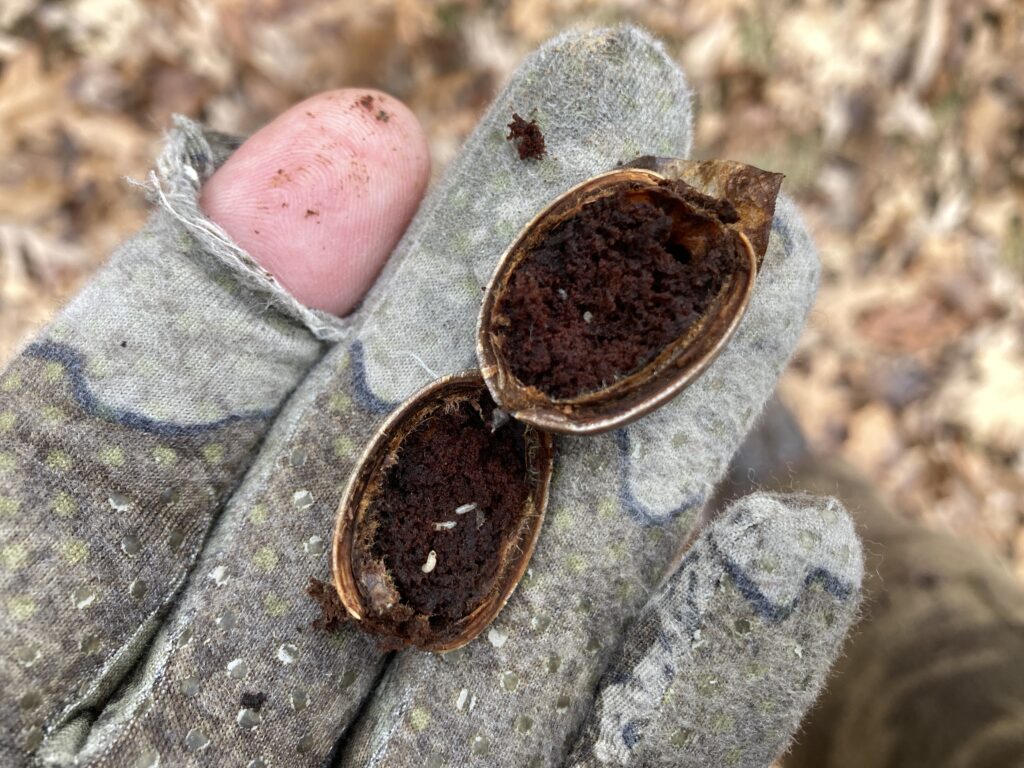
Northern PA’s acorn crop largely failed in 2021, possibly due to a late frost that killed the acorn flowers. Acorns remaining on the ground looked OK from the outside, but were all rotten like this on the inside. Wildlife is hungry and moving widely to locate food.
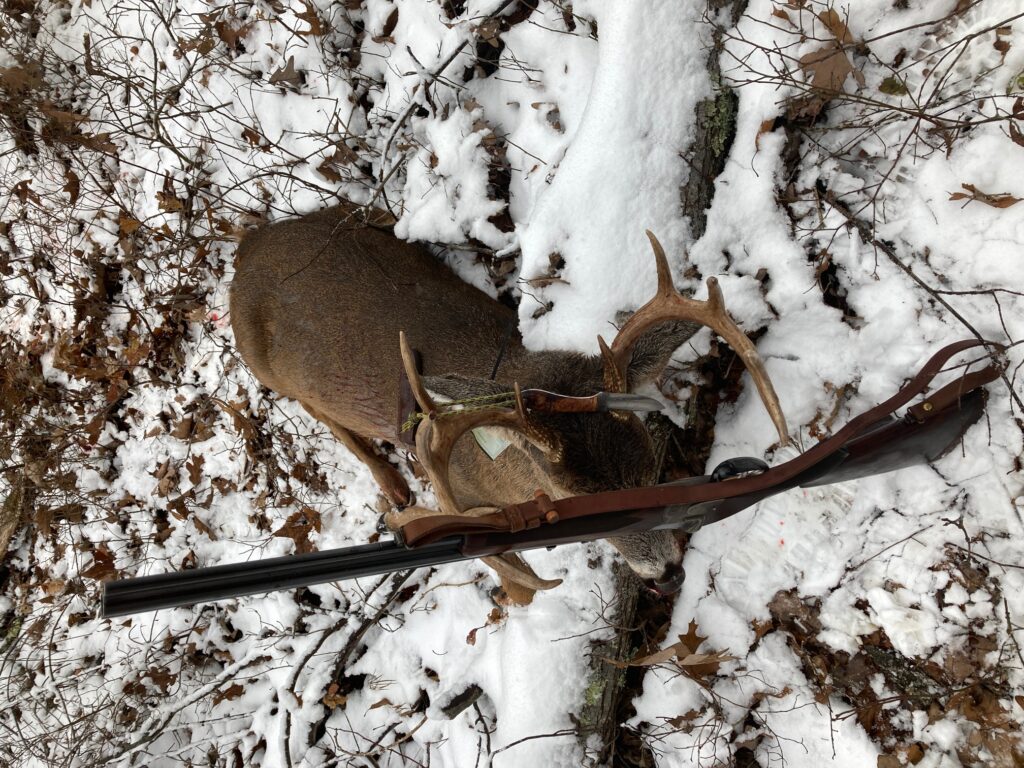
My “Freedom Buck,” killed on Sunday November 28th at 7:45am, on private property in PA. The ban on Sunday hunting is an attack on freedom, and so I named this Sunday morning buck after my declaration of freedom.
The deer that got away, but shouldn’t have
Below is the buck after the second bullet, at about 140 yards, the hole of which is visible behind his shoulder; a classic behind-the-shoulder double lung/ top of heart hit. Usually it’s immediately fatal. Usually the animal is knocked down by the impact. But not that day. He absorbed the second soft point without moving, just standing there broadside, as if I had completely missed him. Even after he dropped he had a lot of life and fight left, as can be seen in his death spiral in the snow.
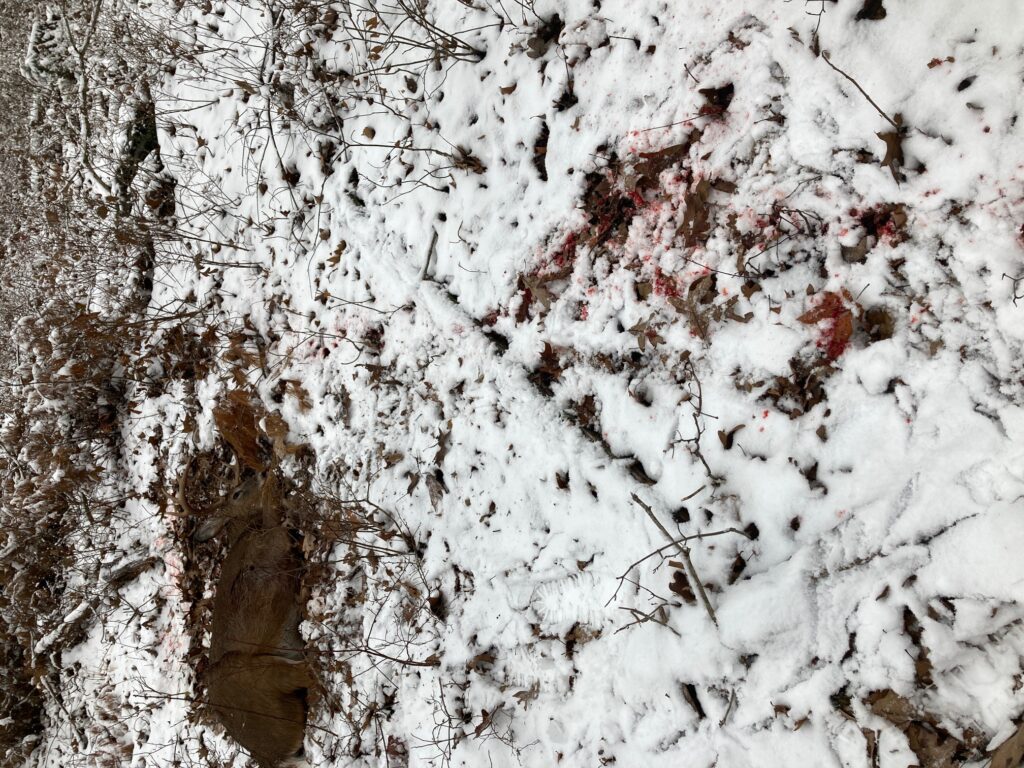
My challenge was that I did not see him fall, which happened while I was fumbling with my binoculars. Because I do not often use a rifle scope, I do not maintain a magnified field of view after my shot. Going back and forth between open sights and binoculars is my process.
As an aside, you may wonder why I use open sights, or you may be one of those people who deride open sights. Shooting instinctively with open sights is how I grew up and how I learned to hunt. Unlike a scope, open sights can take a lot more abuse in the field before they go out of whack. Unlike a scope, they cannot possibly lose their “zero” after spending eleven months in a closet. Open sights are absolutely reliable, and perfectly effective. Recall that American infantry are qualified on open sights out to 600 yards (or meters), so it is not like these things are relics from the past. Open sights are the best option, provided they are installed correctly and checked annually.
My preference for open sights is about more than performance, however. It has to do with how I like to hunt: On foot, getting close to the animal, within its sensory zone, and trying to kill it on its own terms, up close. This is a true contest of skill, not an assassination. And I hardly think an open-sighted center fire rifle is a disadvantage; it is a huge advantage over a spear or a bow. Scoped rifles are just that much more of an advantage.
So, I did not see the buck fall, and he fell into a small swale where I could not see him. Not wanting to stink up the woods and ruin further hunting, I sat on my butt and scoured the woods for signs of a deer. In fact, I saw a large buck a couple hundred yards away sneak into a thick tree top blowdown. It made me think the buck I had shot at was gut-shot and sneaking away to lie down, and so I did not push him. Only when the crows showed up over an hour later was it evident that the buck was in fact dead right where I had last seen him.
